
Newsletter of the History of Art Department at the Fashion Institute of Technology

Volume 6, Spring 2024





Volume 6, Spring 2024


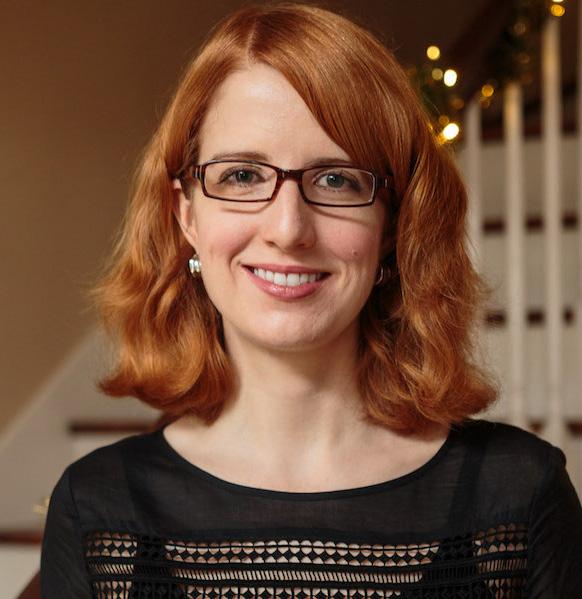
After a year-long sabbatical, I was happy to return to the department this fall and reconnect with colleagues and students. When I first became chair in January 2020, we were unexpectedly thrust into remote teaching, and in much the same way we are now grappling with another disruption—teaching and learning in the age of AI.
I am confident that we will handle this challenge with the same determination and grace that got us through the pandemic.
Kristen Laciste, a new full-time faculty member, joined our department in fall 2023 and is teaching courses on African art and fashion; she also developed a new course, Afrofuturist Art and Visual Culture (HA 253), which is cross-listed with film and will be offered in fall 2024. We continued with our effort to expand and diversify our survey offerings with a new global course, Global Modern Art (HA 131) by Chad Laird. Andrea Vázquez de Arthur wrote HA 254: Modern and Contemporary Latin American Art, which will first be offered in spring 2025. Our department completed updating all the history of art curriculum to be in compliance with the new SUNY general education requirements that will take effect for students entering in fall 2024. Finally, Lourdes Font and Natalie Nudell wrote a new introductory textile history course that will replace the History of Textile Trade
(TS 215) and Technology and Textile Surface Design: Styles & Sources (TD 113) and ensure textile students are taught textile history by historians.
The spring semester saw the Art History and Museum Professions (AHMP) program be accredited by National Association of Schools of Art and Design (NASAD). Thanks to Alex Nagel for shepherding the program through that process and also for his leadership of AHMP, which itself went through its five-year review, with visits in spring 2024 by external evaluators.
The department taught nearly 4,800 students in the past year, including 41 AHMP majors and more than 300 HA minors. The Fashion History Timeline website attracted 1.8 million visitors in the last year, and its Instagram page hit more than 57k followers.
We sadly had to say goodbye to Department Coordinator Jen Fantozzi, who has gone to work across the hall in the Liberal Arts and Sciences Dean’s office, but are excited to welcome Jasmin Miranda to the department. Thanks as ever to Molly Schoen, Visual Resources Curator, and Nanja Andriananjason, Technologist, for their essential support of our faculty and students. We conducted a successful search for a full-time fashion historian and are pleased to announce we’ll be joined by new professor José Blanco F. in the fall.
It is an exciting time in the department and we look forward to what the future holds!
Justine De Young, Associate Professor and Chair, History of Art
Mya M. Seward Fine Arts ‘22
It’s the F---ing Junction, 2022
36” x 48” Oil on canvas



The George T. Dorsch Awards in the History of Art department were established with funds bequeathed to the department by one of its founding members, George T. Dorsch. An esteemed member of the department and of the FIT community, where he taught for 32 years, Professor Dorsch passed away in September 2000, leaving the farsighted and gracious legacy of an annual gift to support faculty and student professional achievement.
For more information, visit the George T. Dorsch Awards page on our website.
The 2023 award winners are:
Marianne Eggler, PhD, recipient of the 2023 George T. Dorsch Endowed Fellowship
Abbygail Coston , recipient of the 2023 George T. Dorsch Endowed Scholarship
Many congratulations to Marianne and Abbygail!
The FIT Art History and Museum Professions program acknowledges that it is located on Lenapehoking, the ancestral homelands of the Lenape people. We recognize the continued significance of these lands for Lenape nations past and present; we pay our respects to the ancestors, as well as to past, present, and emerging Lenape leaders. We also want to recognize that New York City has one of the largest urban Indigenous populations in the United States. We believe that addressing structural Indigenous exclusion and erasure is critically important and we are committed to actively working to overcome the ongoing effects and realities of settler-colonialism within the institutions where we currently work.

For the fall 2023 semester, the Art History and Museum Professions (AHMP) major program accepted its largest cohort yet of new students.
Our program’s continued success is apparent as alumni continue to be hired in high-profile positions, gain more practical experiences in prestigious paid internships, and enter distinguished Master of Arts graduate programs. As AHMP founder Professor Katherine Michaelsen retires in spring 2024 (see p.14), we thank Katherine so very much for her vision and passion over the years. Speaking of passion, our Valentine’s Day blog post “Museum Love Letter Week” attests to our love of museums.
Many current AHMP students are already working in prestigious art galleries and museums in the city: Claire Quigley (AHMP ‘24)—who is also this year’s AHMP Senator as well as the curator of student artworks found in this newsletter—is an intern at the New Museum of Contemporary Art on Manhattan’s Lower East Side. Maria Martin (AHMP ‘25) is a gallery assistant at Kathryn Markel Fine Arts, Aly Barnaba (AHMP ‘24) works at Leonovich Gallery, and Ashley Villegas Hernandez (AHMP ‘25) is a guest experience intern at the Museum of Ice Cream. For her work as AHMP MFIT Museum Facilitator, Stella Hobart (AHMP ‘24) won the student award from the FIT Couture
Council in September 2023 (fig. 1). Other museum facilitators in 2023 and 2024 included Wyley Menolascino (AHMP ‘25), Marielle Hickly (AHMP ‘25), Patrick Garry (AHMP ‘25), and Samantha Barnes (AHMP ‘25). In the spring of 2024, Marielle Hickly (AHMP ‘25) and Ashley Villegas Hernandez (AHMP ‘25) began working on a project with FIT Advertising and Marketing Communications Professors Ted Schachter and Loretta Volpe, along with the social media team at The Museum at FIT (MFIT). In the fall semester, Professor Volpe’s class, Publicity/Public Relations for Visual Arts Management (AC 322), engaged all AHMP students in a survey with MFIT, which was presented to Dr. Valerie Steele, director of the museum, at the end of the semester.
 PHOTO: WYLEY MENOLASCINO (AHMP '25)
FIG. 1
PHOTO: WYLEY MENOLASCINO (AHMP '25)
FIG. 1
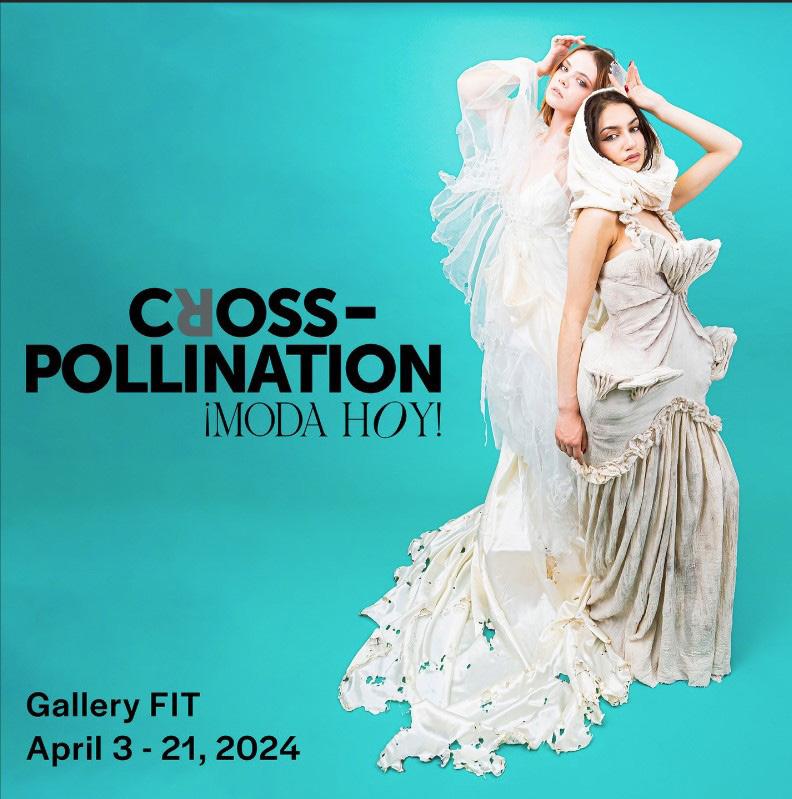
Throughout the academic year, Aly Barnaba (AHMP ‘24) and Dina Pritmani (AHMP ‘24) worked diligently to curate Cross-Pollination: ¡Moda Hoy! This exhibition ran not only at The Gallery at The Museum at FIT but also at LASALLE College of the Arts in Singapore! Thanks to an invitation from Tanya Meléndez-Escalante, Senior Curator for Education and Public Programs, and Melissa Marra-Alvarez, Curator of Education and Research at The Museum at FIT, Aly and Dina worked with two of Professor Andrea Diodati’s classes and with students in Singapore on a thought-provoking exhibition which celebrated diversity in craftsmanship and explored the boundless possibilities of our interconnected world (figs. 2–6). (See also p.24)
In November, AHMP students Aida Prerovic (AHMP ‘24), Sofia Santos (AHMP ‘24), Claire Quigley (AHMP ‘24), and Thursday Abad (AHMP ‘25) helped coordinate the annual College Night at the Morgan Library and Museum (figs.7–9)
While New York has plenty to offer AHMP students, many also enjoyed a semester abroad. Tsaia Dawson (AHMP ‘24) was at York University in the UK, while Neige Giacalone (AHMP ‘25) spent a semester in Paris, and Renee Dery (AHMP ‘25) studied in Florence, Italy. Not directly related to studying abroad, but still many congratulations go to Samantha Barnes who was invited to be a Harvard University summer school proctor in 2024!
Fotini Lane (AHMP ‘14) recently became Vice President of Visitor Experience and Organizational Customer Service at the 9/11 Memorial & Museum. Angelica Pomar (AHMP ‘21)

accepted a new position as Assistant Educator in the Artist Programs at MoMA in early 2024. Angelica also curated the exhibition slip, open from December to late January, at 205 Hudson Gallery in Manhattan. Karla Medina (AHMP ‘21) is now the Visitor Engagement Associate at MoMA PS1, while Emma Ike (AHMP ‘20) is now the Education Manager at the Noguchi Museum in Queens. Natalie Przybylski (AHMP ‘21) has been promoted to Bids & Client Service Coordinator at Christie’s. Michael Naples (AHMP ‘18) is now the Assistant Manager of Development at the Carnegie Museum of Art in Pittsburgh. Emma Sosebee (AHMP ‘23) accepted a position at the beautiful Olin Library, which is part of Cornell University Library, and Chloe Foster (AHMP ’23) accepted a position as Assistant to the Director, Woodstock Byrdcliffe Guild. Finally, Xin Yi Zhao (AHMP ‘19) is now the Associate Director of the Antiquarian Booksellers Association.

 PHOTO: DANNY ALVARADO, WENDY BEAUVAIS
PHOTO: DANNY ALVARADO, WENDY BEAUVAIS
FIG. 2
FIG. 4
PHOTO: DANNY ALVARADO, WENDY BEAUVAIS
PHOTO: DANNY ALVARADO, WENDY BEAUVAIS
FIG. 2
FIG. 4



John Paul Jang (AHMP ‘22), who worked as a Visitor Experience Associate at the Brooklyn Museum, recently entered the MA Art Business program at Sotheby’s Institute of Art (see p.22). Nico Frederick (AHMP ‘23), Zoe Klipstein (AHMP ‘22) and Frida McKeon Loyola (AHMP ‘22) are all currently in FIT’s Fashion and Textile Studies: History, Theory, Museum Practice MA program, and they are already working on their next exhibition at The Gallery at The Museum at FIT. Chrysa Tasioula (AHMP ‘22) is now studying for her MA at Hunter College, and Richard Montanez (AHMP ‘22) accepted an offer from the School of Visual Arts to join their MA in Fine Arts program in the fall semester.
In fall 2023, we were proud to have partnered with SAGE, America’s oldest and largest not-for-profit organization dedicated to improving the lives of LGBTQ+ older people. Honoring FIT’s World AIDS Day memorial events, we co-organized two tours during which locals could learn about the ways present and past FIT communities have honored members of the LGBTQ+ community in the Special Collections and College Archives, part of FIT’s Gladys Marcus Library (fig. 10)
Led by its new president Samantha Barnes, the AHMP Association (AHMPA) organized an event with Dr. Flavia Rando from the Brooklyn-based Lesbian Herstory Archives in the FIT Katie Murphy Amphitheater in the fall (fig. 11). In spring 2024, we were honored to have a private, behind-the-scenes tour of the Stonewall National Monument Visitor Center, which will open to the public in June. The visit with Diana Rodriguez, founder of Pride Live, was a true highlight! Lara Roessig, a Fulbright student and fashion researcher from Germany, provided an overview of her work for an event co-organized with The Museum at FIT (fig.12) Sofia Santos (AHMP ‘24) co-organized an event with Anya Lim, co-founder of Philippines-based ANTHILL Fabrics, on
Philippine handwoven textiles. In the spring of 2024, AHMPA visited the MoMA Creativity Labs. Also that semester, the student group had a wonderful visit with curator Jenny Parsons at the Florence Griswold Museum in Connecticut (figs. 13–16)
As always, our classes met many professionals working in museums in the city. We are always honored to meet Dr. Valerie Steele, Director of The Museum at FIT; Tanya Meléndez-Escalante and Zainab Floyd from the Education Department and Michael Goitia from the Exhibitions Management team; Elizabeth Abbarno and Erica Ciallela at the Morgan Library & Museum; Joelle Seligson, Alejandra Perez (AHMP '19), and Katrina Dumas (AHMP ‘11, see p.22) from the Brooklyn Museum. This year, AHMP students also were able to enjoy two intimate visits to the Metropolitan Museum of Art as part of our growing partnership with the museum. These trips included visits to the East Asian Conservation Studio and a tour of the ancient Near Eastern galleries in the Assyrian court.
Guest speakers in our courses included Remigio Mestas of Oaxaca, Mexico, who works with the finest weavers in villages throughout the state (fig. 17). We also met with the Met’s Object Conservator Carolyn Riccardelli (fig. 18) and with Becky Kaczkowski, Conservator at the National Museum of Natural History at the Smithsonian Institution in Washington, D.C. In the fall semester, AHMP partnered with the FIT Career and Internship Services Center as we invited Krishna Aniel from the Smithsonian Institution’s National Museum of the American Indian to talk about the many opportunities there are for AHMP students across the world’s largest museum complex.
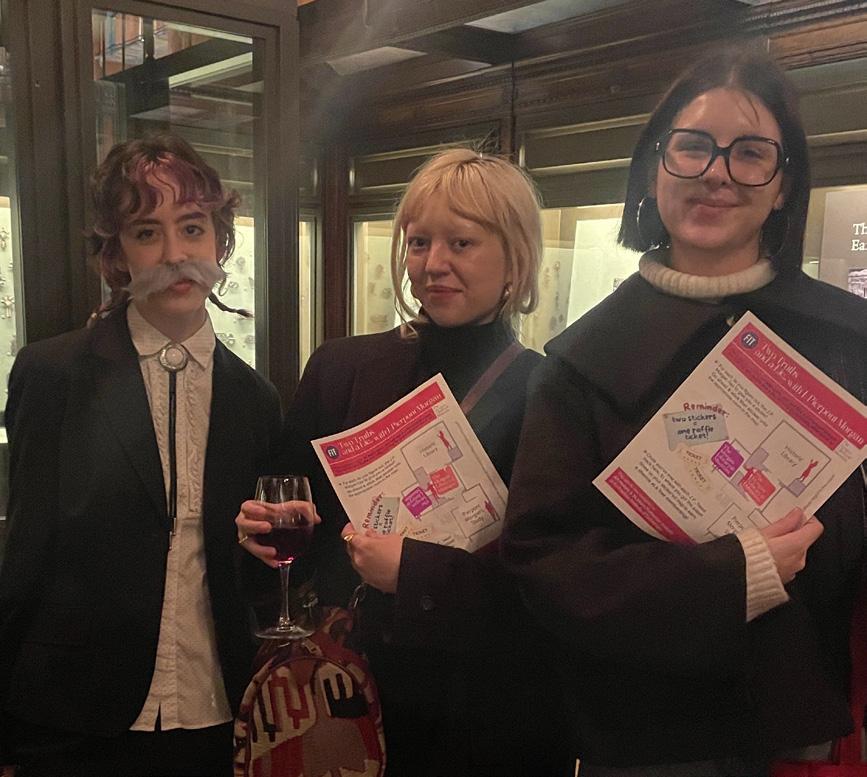

 FIG. 7
FIG. 9
FIG. 11
FIG. 7
FIG. 9
FIG. 11





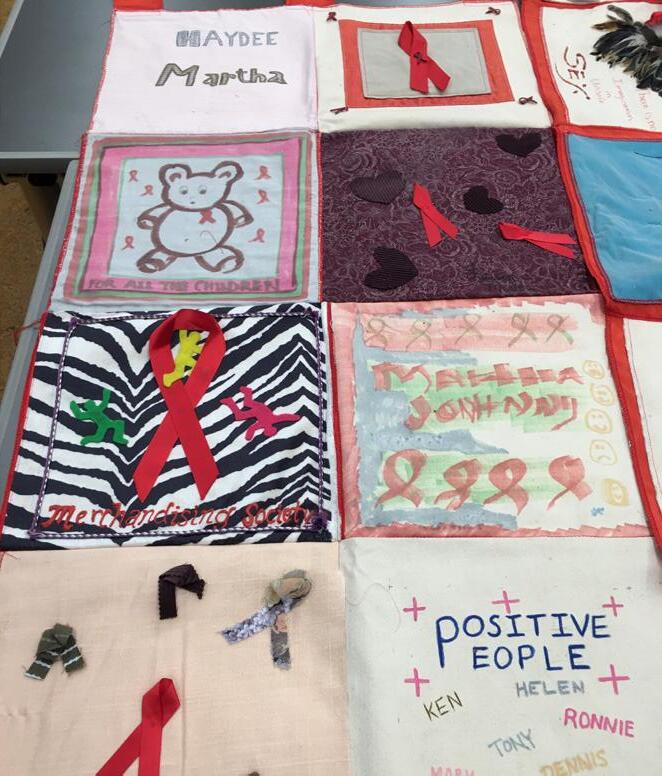


Together with Dr. Helen Gaudette from FIT’s Office of International Programs, AHMP continued to collaborate on the Globally Connected @ FIT discussion series during the academic year. One of these events was a talk with Spanish fashion designer Elisa Palomino, entitled "Sustainable Fashion and the Sea: Fish Skin as Ecological Resource." In March, Lana Ogilvie (AHMP ‘25) moderated an event with Greek textile researcher Mina Nikoloveni from Brown University. We are excited to continue all these exciting relationships and collaborations and we thank everyone who supports our AHMP program and students.
Finally, I want to congratulate all of the 2024 AHMP graduates for their dedication, teamwork, and brilliant ideas throughout their time in the program. The History of Art Department wishes you all the best in your future careers!

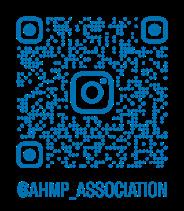


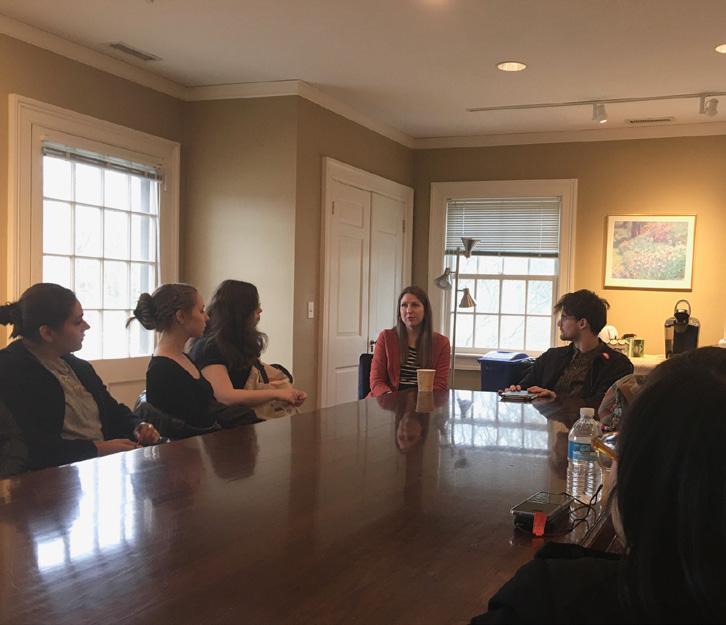

The Fashion Calendar Research Database (FCRD) officially launched on November 11, 2023 at the Archiving Fashion Conference held at FIT. Both the project and event were co-organized by FIT’s History of Art Department and Special Collections and College Archives (SPARC) at the Gladys Marcus Library. The new research platform is the culmination of a three-year-long digital humanities project titled “The Ruth Finley Collection: Digitizing 70 Years of the Fashion Calendar,” which was a collaborative initiative between the two departments. The endeavor was supported by a Digitizing Hidden Collections grant from the Council on Library and Information Resources (CLIR). The CLIR grant program is funded by the Mellon Foundation.
The Fashion Calendar, published by Ruth Finley between 1941–2014, was the unique and centralized scheduling service for the fashion and creative industries in New York, domestically in the US, and it also included foreign fashion week schedules. The periodical was published weekly until the early 1980s and then twice monthly until it was acquired by the Council of Fashion Designers of America (CFDA) in 2014. Each issue of the calendar was printed on pink paper and contained hundreds of neatly typed listings that notified subscribers about fashion shows, industry events, presentations, retail activations, professional gatherings, museum exhibitions and the social calendar of benefit galas and openings. The scope of the material is vast and reflects broader historical, economic and labor trends throughout the twentieth and early twenty-first centuries.
The core project team comprised Karen Trivette, Head of SPARC; Joseph Anderson, Digital Initiatives Librarian, and myself. We designed the database development stages to include two focus groups (which included faculty members from the School of Liberal Arts and Sciences, librarians, students, and external experts), and we developed paid and for-credit internships for students as well. Since the data within the material was so consistent and contained thousands of named entities, people and organizations, we developed a digital humanities project that would enable users to navigate the collection in a multitude of ways, with enhanced search optimization capabilities, full-text searches, data visualizations, maps, and N-gram models. In order to do this, we needed to extract the information from the material and parse it into spreadsheets so it could be processed and tagged with added identity and category attributions.


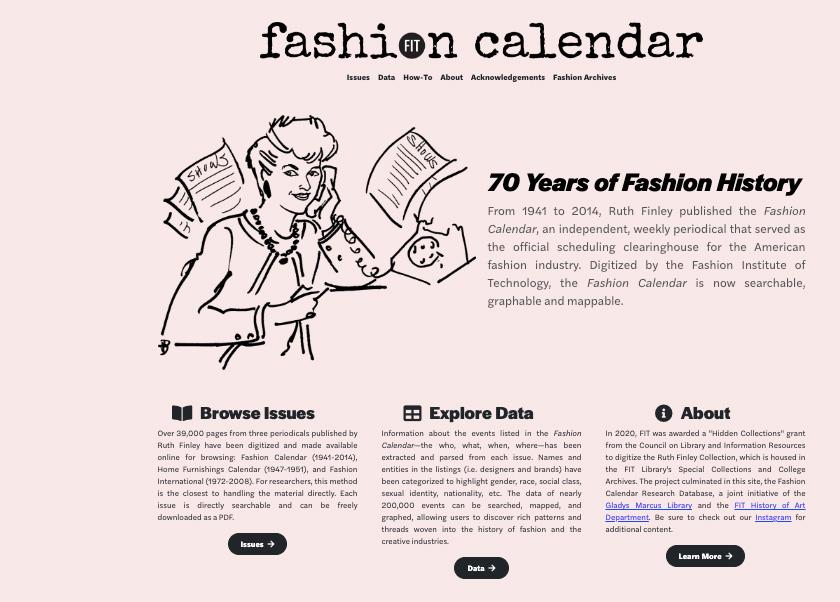
proved to be the most challenging hurdle we faced.
Once all of the scanned material was returned to us by our digitization vendor, we realized that the Optical Character Recognition (OCR) software that was used did not capture the text in the calendars correctly. This data extraction issue delayed the second stage of the project development, but we were able to overcome the issue by pursuing new and experimental technologies using artificial intelligence and machine learning. Luckily, the scanning services estimate that we initially budgeted for was higher than the final amount paid, and we had some flexibility in our remaining funds to seek external help. A Canadian company, Explor.AI, developed an AI-driven code that extracted and parsed out the data in the calendars and returned to us tens of thousands of pages that used color-coded highlights and boxes to indicate extracted data. With the now workable data, student workers helped with quality control, research, and identity attribution tagging.
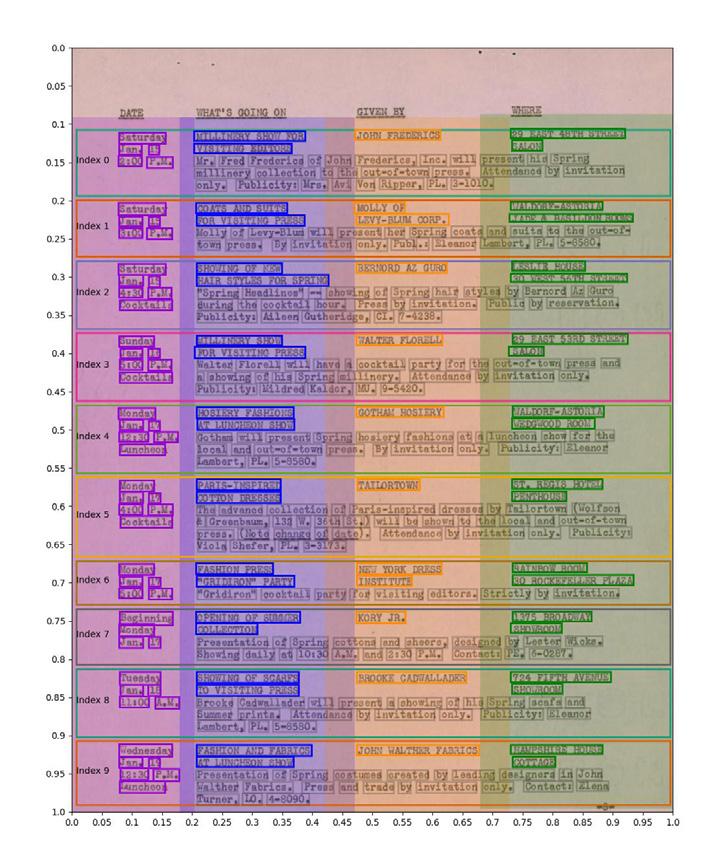
Numerous AHMP students participated and gained experience in database development and in conducting research on people and groups listed in the Fashion Calendar. Their work helped us develop the digital tools that allows users to search and quantify the impact of specific demographics and groups that are historically underrepresented, such as BIPOC communities, women, and LGBTQIA people.


One of the most important elements of the project is that it is entirely open-source.
All of the material that has been digitized has been made available with a Creative Commons 4.0 Attribution License, and the digital infrastructure and codes are also available publicly via Github. As the project team continues to develop the next phases of the FCRD and more material relating to its pedagogical uses, we invite educators and users of the database to share their experiences using the material and the data functions in relation to how it has informed or helped with their work.
History of Art is the most popular minor at FIT, according to a 2018–2023 analysis conducted by the Office of Institutional Research and Effectiveness.
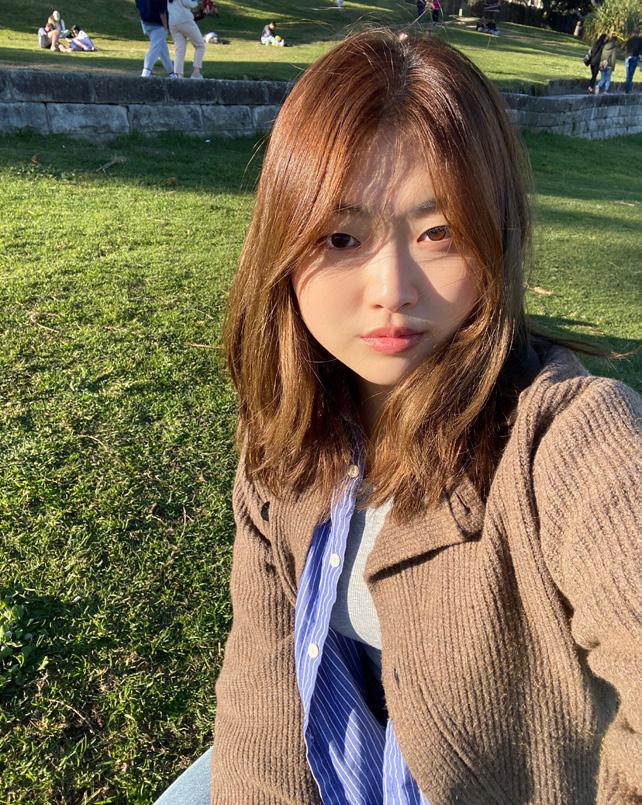
I’ve taken five art history classes so far. Art in New York (HA 214) is one of my favorite courses I’ve taken at FIT. It provided a unique hands-on experience of exploring different museums and exhibitions throughout the city. This not only expanded my knowledge of art but also allowed me to engage in meaningful discussions with classmates, enhancing my appreciation and understanding of various artistic styles and movements. Additionally, being immersed in the vibrant art scene of New York City was incredibly inspiring.
Modern and Contemporary Korean Art (HA 240) stood out to me because it offered me a fascinating insight into the Korean art scene.
As a Korean, I realized that while I was familiar with Western artists, my knowledge of Korean artists was quite limited. This realization sparked a desire to learn more about Korean art, leading me to enroll in this class. Through the course, I discovered many incredibly talented Korean artists whom I had previously been unaware of.
Learning about their contributions to the Korean art scene and understanding the cultural and historical contexts that shaped their work was both enlightening and fulfilling. It was intriguing to explore how these artists contributed to elevate the status of Korean art. Overall, the course not only broadened my understanding of Korean art but also deepened my appreciation for the rich artistic heritage of my own culture.
— Eunseo Kim, Fashion Business Management ‘24
Visit the History of Art minor page to learn more.
The artwork featured throughout the newsletter was curated by Claire Quigley, AHMP
‘24
Claire Quigley is an emerging curator, artist and cultural worker based in New York City. She began her studies at the Fashion Institute of Technology within the Fine Arts associates program where she developed a stronger creative process and a language of her own to translate her creative inspirations, especially in the mediums of oil painting and printmaking. Her work is especially reflective of her relationship with spirituality, sexuality and nature. Additionally, as the Student Government Association Senator for Art History and Museum Professions, she serves as a member of the Sustainability Council, which works on a number of student-run initiatives to create and promote a more sustainable campus. Her academic studies have a particular focus on the intersection of sustainability and diverse cultural representation in the contemporary art world. During her studies in the AHMP program, she has gained experience working in a variety of cultural institutions in New York such as the New Museum, the Morgan Library and The Museum at FIT. She will graduate in May 2024 with a bachelor’s degree in Art History and Museum Professions with minors in French and Ethics and Sustainability. To view more of her work visit: www.clairequigleyart.com

Where the F--- Am I Supposed to Go from Here?, 2023
20” x 26”
Oil, cardboard, and molding paste on wood panel
Mya M. Seward Fine Arts ‘22
After close to fifty years of teaching at the Fashion Institute of Technology, Professor Katherine Jánszky Michaelsen retired at the end of the spring 2024 semester. Her career as an art historian began at Columbia University, where she received an MA in 1970 and a PhD in 1975. Her dissertation, Archipenko: A Study of the Early Works, 1908–1920, was published by Garland Press as part of its Outstanding Dissertations in the Fine Arts series. In 1976, FIT hired Katherine as an adjunct instructor; in 1981, she was promoted to a full-time appointment and received tenure in 1984.
Perhaps most notable among Professor Michaelsen’s many accomplishments, she founded the Visual Arts Management major program in 2005—which we know today as Art History and Museum Professions, or AHMP. A first-of-its-kind program, Visual Arts Management and later AHMP prepared students for careers in museums, auction houses, and art galleries. It was also the first bachelor’s degree program offered by FIT’s School of Liberal Arts (now the School of Liberal Arts and Sciences). While traditional art
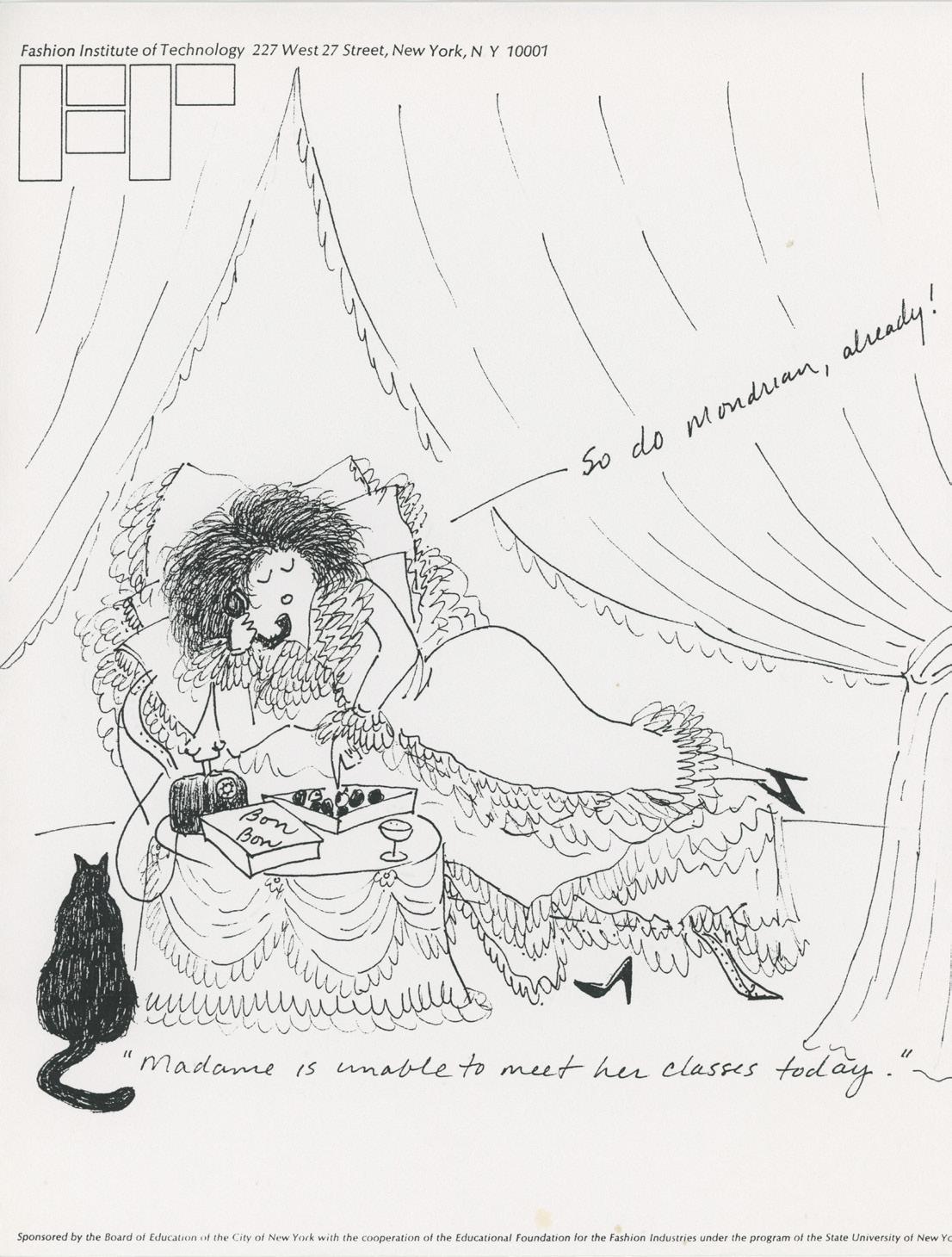
history programs typically focus on curatorial aspects of the museum sector, AHMP includes curriculum and hands-on experience in other areas of cultural heritage work: registration, preservation, business operations, visitor services, and more.
In addition to founding the AHMP program, Professor Michaelsen also served as chairperson of FIT’s Art Market program in the School of Graduate Studies from 2002–2015. She has published countless articles, essays, interviews, and she has curated exhibitions both locally and abroad. In the very first issue of Art History Insider, published in 2019, she penned an article on the development of the History of Art Department and how the AHMP major came to be.
It is difficult to imagine where the History of Art Department would be without Professor Michaelsen’s decades of leadership and service. Fortunately for all of us, Katherine is not leaving the college entirely. While she is retiring from her full-time professorship, she will continue to teach her popular course on the Bauhaus (HA 316). The department wishes Katherine all the best in her retirement, and we thank her for her years of unwavering effort in helping the HA department and the AHMP major become what they are today.
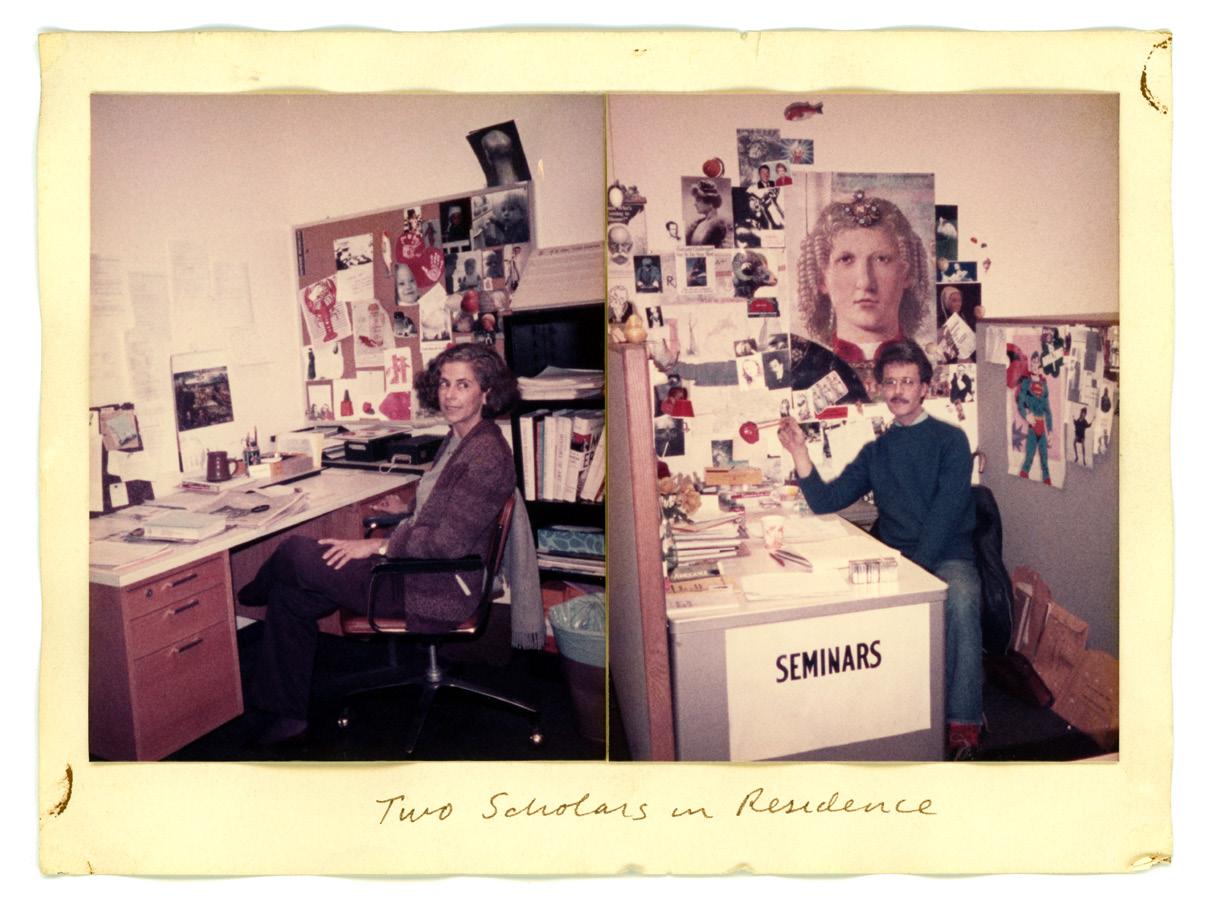
read "Madame is unable to meet her classes today" and "You appeared to be unable to come to grips with your emotions and squarely face the problem of 120 students and their final exams."
Like a soaring peregrine attentive to details of color and line and movement, Katherine has been an essential professor in our department, single handedly imagining and willing the Art History and Museum Professions major into existence for the benefit of our community of faculty and students. All good wishes to you Katherine in all that you endeavor. – Anna Blume
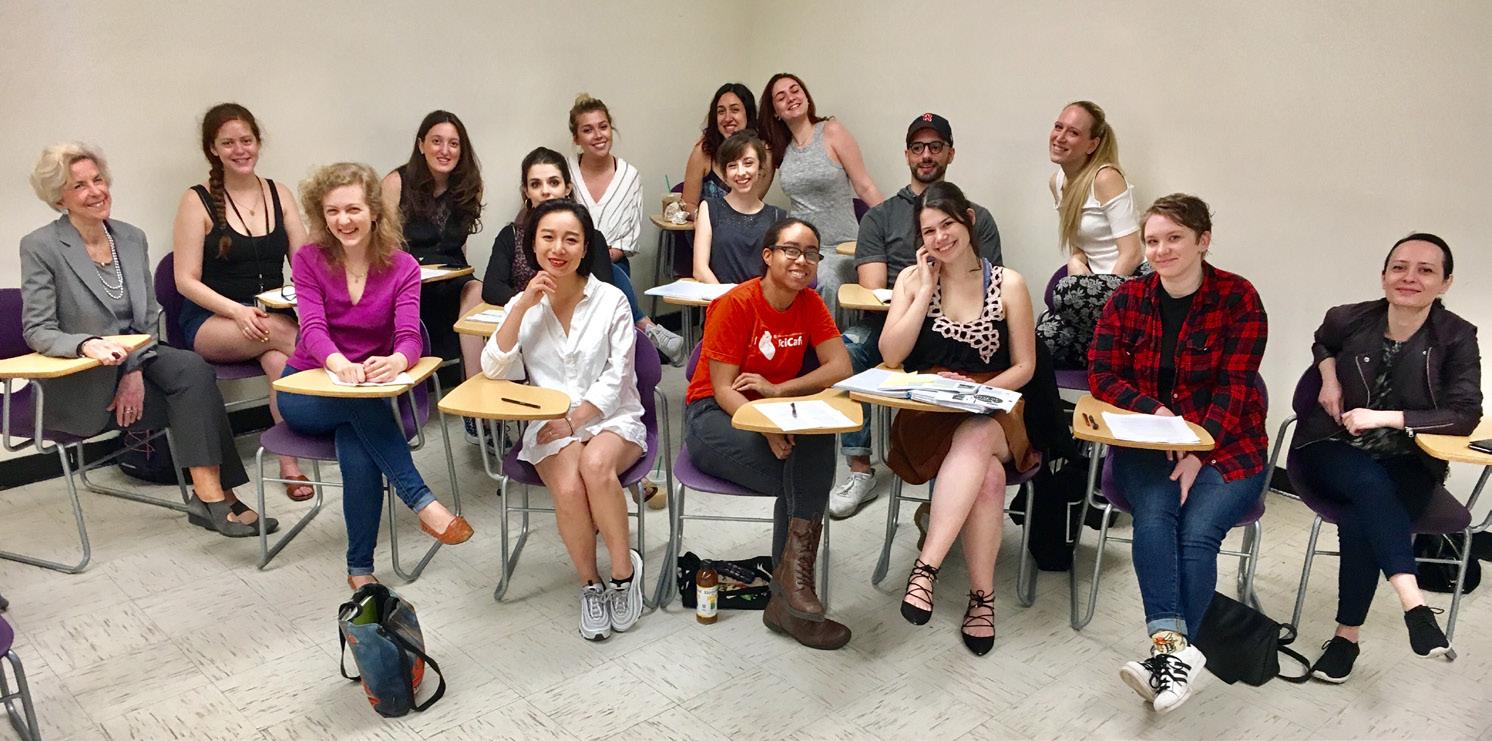
Katherine’s wealth of institutional memory is irreplaceable, so I am glad she isn’t really leaving us entirely. She was a driving force behind FIT’s transition to an internationally renowned college with an art history major and graduate programs. All of us benefit from her prolific accomplishments and contributions, and now from her sage wisdom and guidance. – Amy Werbel


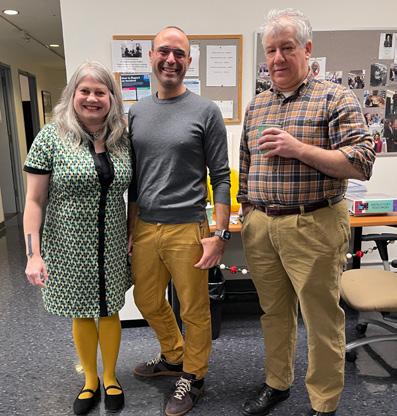




I had the privilege of witnessing Katherine’s leadership and contributions not only in History of Art but also as the longtime Chair of the Art Market Studies MA program. She handled her dual role at the college with grace and humor, and she was unwavering and inspirational in her dedication to teaching. I’m glad that she will continue teaching her beloved Bauhaus course (HA 316), and that we will continue to share in a wonderful colleague and friend. – Lourdes Font
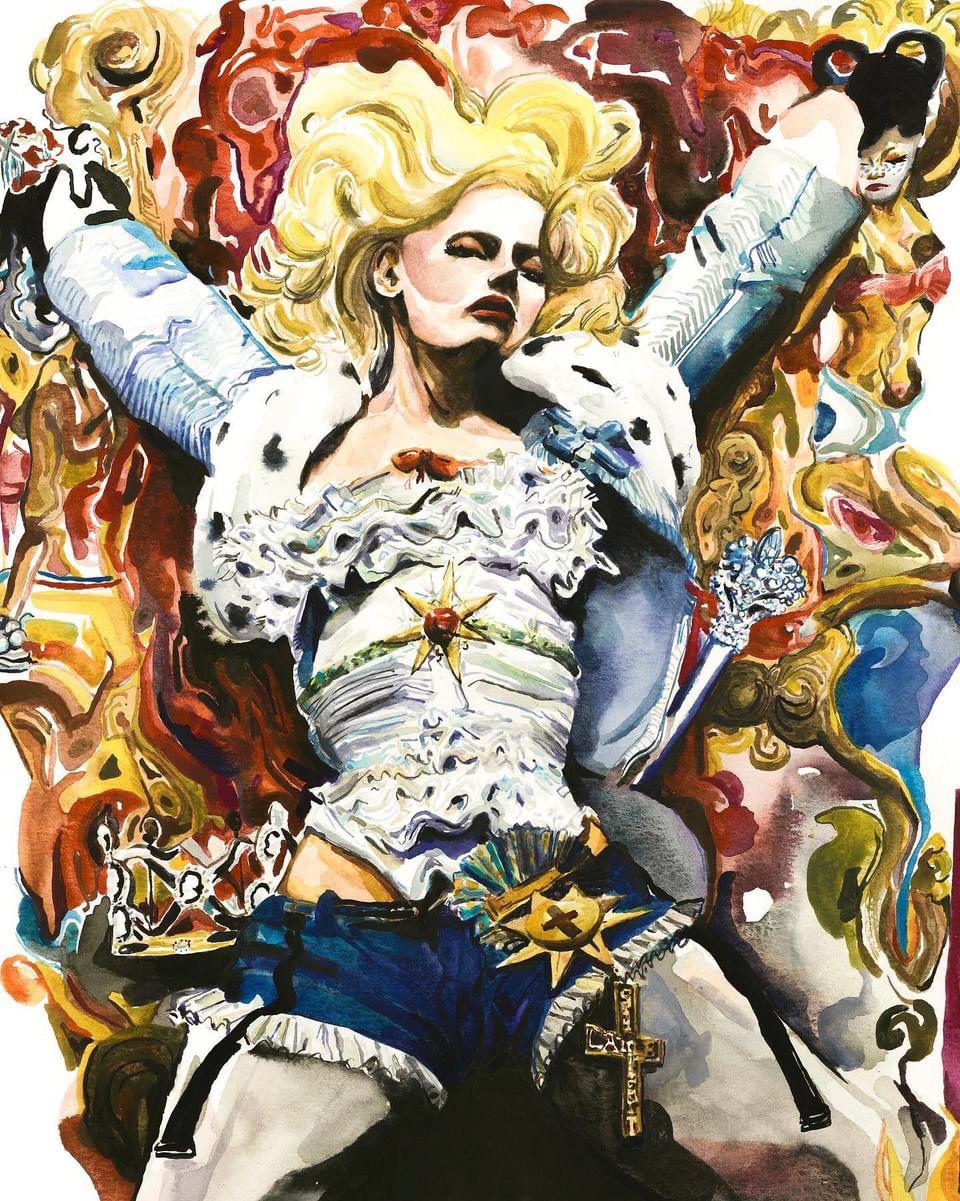
Jacob Frazier
Illustration ‘25
Love, Angel, Music, Baby, 2023
11” x 15”
Watercolor, acrylic ink
 Jacob Frazier
Illustration ‘24
Front Row, 2023
18” x 24”
Jacob Frazier
Illustration ‘24
Front Row, 2023
18” x 24”
 Alana Moy
Illustration ‘24
Soy De Aqui, 2023
18” x 24”
Alana Moy
Illustration ‘24
Soy De Aqui, 2023
18” x 24”
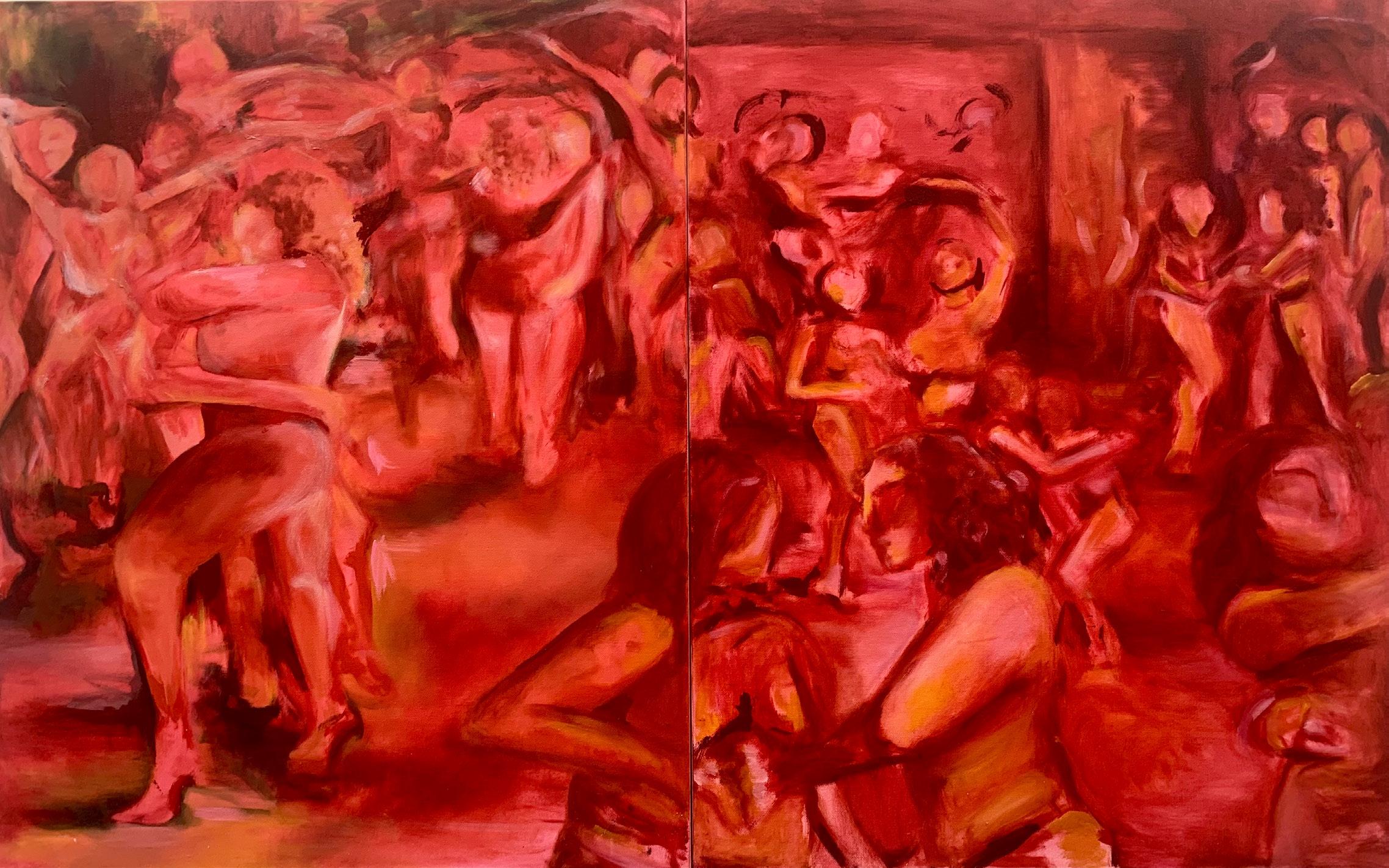
Claire Quigley
Art History and Museum Professions ‘24
Heat, May 2022
30” x 48”
Oil on canvas
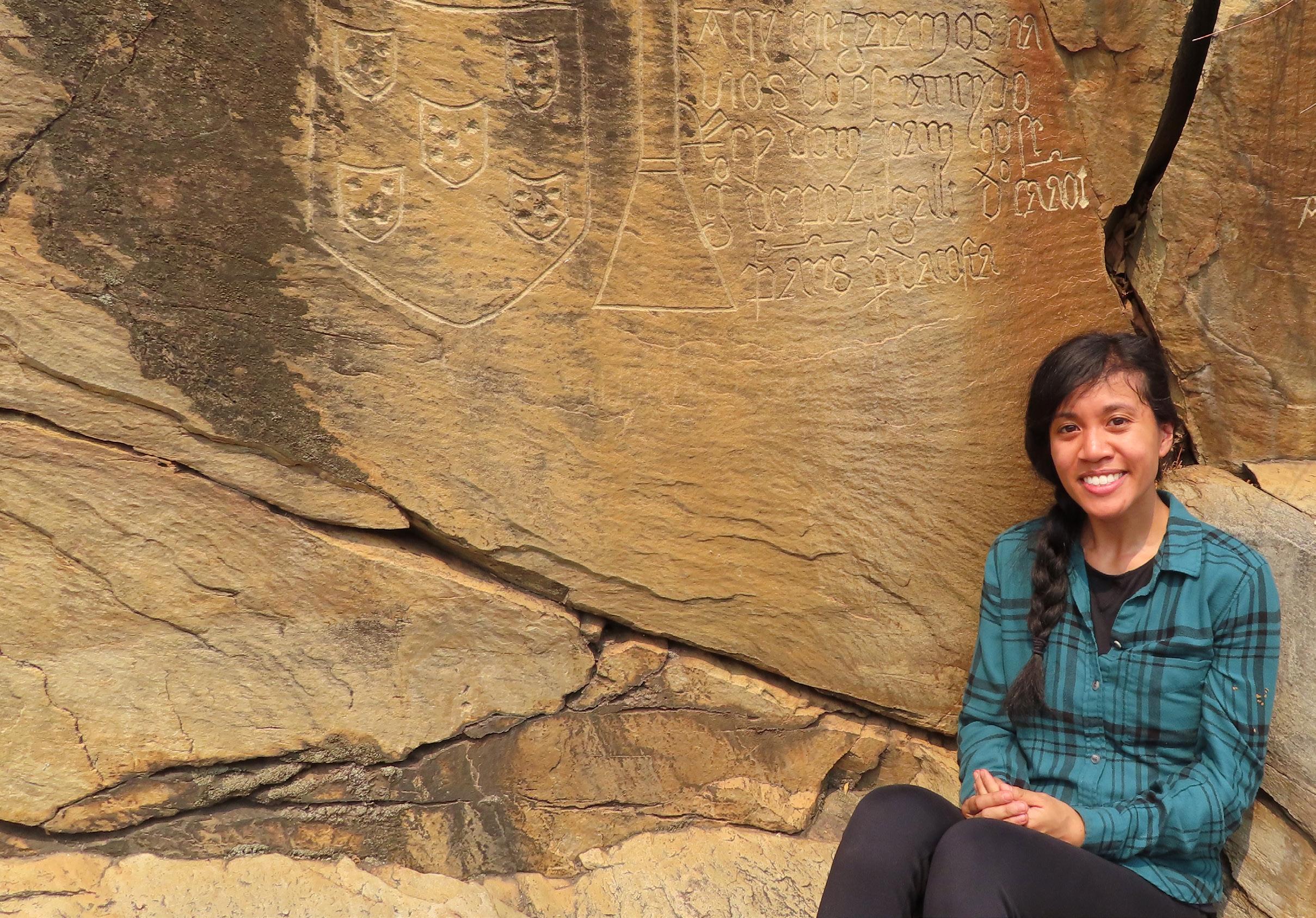
As I reach the end of my first year as a full-time assistant professor in the History of Art Department, I can say with full confidence that it has been a profound pleasure and privilege. I am thankful for the opportunities to teach classes in my area of expertise, African art history, and to connect the study of African art to historical and contemporary issues and events. For me, it is always worthwhile to facilitate challenging conversations with students about how the legacies of colonialism, the transatlantic slave trade, and slavery impact art—and perceptions about art—from Africa, especially in the museum space. Moreover, being able to teach with collections and exhibitions of African art housed in museums across New York City, such as the American Museum of Natural History, the Brooklyn Museum, and the Metropolitan Museum of Art, has made the material more alive and engaging for both the students and for me. I look forward to wrestling with tough questions and material in Afrofuturist Art and Visual Culture (HA 253), a course I wrote and plan to teach this upcoming fall.
As I reflect on the academic year, I cannot help but look back to when I first became curious about African art. When I was an undergraduate student, I was a Studio Arts major and believed that I would create art for my career. When I took a course as a freshman in beginning sculpture, my professor assigned the class PBS Art21 videos to watch to learn about contemporary artists. One of the segments from the episode “Transformation” was about Nigerian-British artist Yinka Shonibare CBE (then listed as MBE). I was captivated by his work,
which I found (and still find) visually stunning and spectacular. While exquisite, playful, and even humorous, I was also drawn to the more serious themes in his work, which largely deal with the British Empire, the Victorian era, colonialism, dandyism, and perceptions of race. Growing up, I loved reading Edwardian and Victorian novels recommended by my older sister and enjoyed watching film adaptations of those novels with her. Shonibare’s work touched upon a nostalgic nerve, but it also struck me because it combined the beauty and
 PHOTOS
PHOTOS
ugliness of human nature with history and literature. Shonibare’s work upended what I thought art could look like and what it could do. My initial interest led me to take courses in the Art History department, including an introductory course to African art. That course further subverted everything that I thought I knew about art, and as it introduced me to art that eludes any easy classification (especially fantasy coffins and masquerade). After taking a more specialized upper division course, which focused on the visual cultures of the Yoruba, Bamana, and Kongo peoples, I decided that I wanted to pursue the study of African art as a career. For my senior year, I wrote a thesis on Yinka Shonibare’s two photographic series, Diary of a Victorian Dandy (1998) and Dorian Gray (2001), with the guidance and mentorship of the professor who taught that upper division course. I applied for and received a research grant that enabled me to travel to London for two weeks to see some of the inspirations behind those two photographic series, and to see an exhibition Shonibare had at the Greenwich Museums. Never in my wildest dreams would I have thought I would go and research abroad.
Last year, I attended the wedding of one of my good friends from college. During his speech, the best man quoted a line from the television series Ted Lasso to describe my friend/the groom: “Be curious, not judgmental.” I would encourage students at FIT to go and do likewise in terms of what you study, as that curiosity and openness might encourage you to meet new people, take you to places that you did not envision traveling to, lead you to opportunities that you did not think you would pursue, and set you on paths you did not imagine going on. Looking back on my career, I laugh because I initially had the impression that art history was boring. As it turns out, I found that studying and teaching African art history to be more worthwhile and fulfilling than making art myself. Before, I used to dream about
showing my own art in a gallery or museum. Now, I find that I am getting to live out a new dream: teaching students about art that means so much to me, as it has transformed my life and has broadened my worldview.

 Kristen Laciste in Kinshasa, Democratic Republic of the Congo, 2019
Kristen Laciste in Kinshasa, Democratic Republic of the Congo, 2019

I’m a sucker when I hear “we really need someone!” That’s how I first became involved in politics. In 2005, as a mother of young kids attending public schools in Burlington, Vermont, my ward had no candidate for school board. It would have cost the city thousands of dollars to hold a special election, so I said I would run. This unfortunately involved dragging my kids around the neighborhood in February gathering signatures in sub-zero temperatures. (We were used to the cold, so it’s not as bad as it sounds to New York City residents).
Anyway, I won that (unopposed) election, and resolved that I would devote five years to serving on the Board as a contribution to bolstering democracy. It seemed daunting at first, but I ended up falling in love with all aspects of the position, including using parliamentary procedure; meeting regularly with students, parents, teachers, and administrators; listening to public comments; and leading community conversations. I gained skills in taking minutes as Secretary of the Finance Committee and in leading meetings and fostering new initiatives as Chair of the Curriculum Committee. Working with diverse community members was especially gratifying. Burlington is a refugee resettlement center, and so we had 6,000 students in our schools speaking 44 languages.
I ended up staying on the Board for six years, during which time we passed the budget every year and created two specialized elementary schools, including one devoted to arts integration. In the summers, I taught Integrated Art History courses for K-12 educators, helping them to develop innovative units (for example, using Renaissance perspective drawings to teach mathematics).
When my service was finished, I looked back on those years with a great sense of pride and happiness. I certainly felt that I had more than fulfilled my promise of devoting five years to bolstering democracy at the grassroots level. And then… two years ago I received an
email that basically said: “we really need someone!” This time, the problem was that no one would agree to run for Faculty Senate President here at FIT. It seemed like déjà vu, and once again, I said yes and have been in the position officially since August 2023.
Like serving on a school board, being involved in the Faculty Senate also involves parliamentary procedure as well as lots of meetings with students, faculty, and administrators. So far, we have been working to include and amplify faculty voices in the formulation of a variety of policies and procedures that support teaching and learning.
FIT as an institution is much larger and more complicated than the entire school district of Burlington, Vermont, but in many ways, politics is always politics. If you want to develop listening and leadership skills, gain experience in public speaking, help to solve problems from the grassroots up, and contribute to the ideals of representative government, I recommend contributing five years to bolster democracy… and if it turns into ten years, even better!

Editor’s note: beginning with this issue, every year we will publish an exceptional student essay from an art history course. Karen Lam wrote this paper for Art History and Conservation (HA 319), taught by Professor Alex Nagel.
Found in Egypt, the ivory sculpture Figurine of a man is an example of some of the earliest known Predynastic Egyptian sculptures depicting humans in formal poses (fig. 1) These sculptures were typically made from not only ivory, but mud, clay, and ceramic as well, and their uses are unknown due to their rarity. On this object, details of the face and clothing were carved into the body, then filled with a black paste. It also exhibits a crack that runs vertically through the length of the piece. There are shallow scratches uniformly covering the surface, as well as two small chips in the figure’s left shoulder area, and a portion of the base is missing. The Metropolitan Museum of Art purchased this figurine in 1964 from Michel Abemayor (1912–1975), and it is currently on display there in Gallery 101. This essay aims to examine the object Figurine of a man and its care throughout its lifetime.
Despite its age of more than five thousand years, Figurine of a man is in remarkably good condition. It has lost its characteristic translucence and gained a yellow-brown patina, a natural result of its old age, but it is mostly whole with one large crack. The incised grooves carved into the figure remain sharp despite the shallow scratches covering the surface, and traces of pigment remain (Shelley 2019, 68). Indeed, being housed in and cared for by a world-class museum means that its physical needs are well met. However, it is of note that the figurine’s provenance listed by the Met only states that it was bought from Abemayor. There is currently no information about its previous owners, findspot, or even the legality of its past ownership; not much information on Abemayor himself is available, either. Furthermore, figurines such as this one are typically unearthed from burial settings, though scholars theorize that they were used as amulets in life, then buried along with their user (Patch et al. 2011, 134). Though not
much is known about life in this period, one may wonder whether human remains should be excavated, and subsequently separated from any goods which were buried with them. This, along with the issues of provenance, raises questions about the ethics of displaying Figurine of a man. While the physical artifact seems quite well cared for in its current home, perhaps its care from an ethical and transparency standpoint leaves something to be desired.
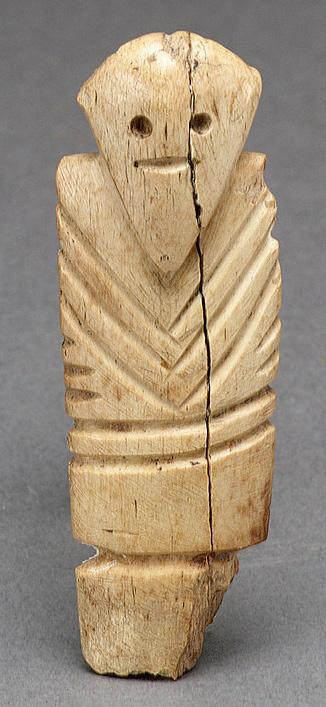
To begin discussing the care of an artifact, one must first consider the material from which it is made. However, even at this stage, one may see a problem regarding Figurine of a man: on the Metropolitan Museum’s web page for this object, the description states that it is made from a hippopotamus incisor, while the overview lists the medium as elephant ivory. The catalogue companion to the exhibition The Dawn of Egyptian Art, written and curated by an ancient Egypt specialist at the Met, also states that the figurine is made from elephant ivory (Patch et al. 2011, 134). Both options are considered ivory, yet a hippopotamus is an entirely different animal than an elephant—and either one is entirely plausible. Hippopotamus hunts were depicted by ancient Egyptians during the Predynastic period, and elephants were also depicted in Egypt around this time, before disappearing during the early Pharaonic period (Stünkel 2017; Naiem 2016, 57). These two types of ivory can look quite similar, particularly when comparing hippopotamus incisors with elephant tusks, but there are ways to tell them apart. Dr. Olga Krzyszkowska, Deputy Director of the Institute of Classical Studies at the University of London, writes extensively about these differences in her guidebook on ivory, some of which can be applied to Figurine of a man. When looking at a length of ivory, ivory from hippopotamus incisors tends to have dense, wavy, and irregular bands called lamellae formed by layers of dentine, whereas elephant ivory shows a much more regular pattern (Krzyszkowska 1990, 213). When compared to the Tusk figurine of a man (fig. 2) from the same time period, but listed as hippopotamus ivory, one can indeed see these irregular, densely packed wavy lines running vertically, contrasting with the more spaced-out and straight vertical lines of Figurine of a man (Patch et al. 2011, 132–134). Additionally, the scratches that cover the surface of Figurine of a man are
not present in Tusk figurine of a man, which may indicate that the former is softer than the latter, which is also consistent with the fact that hippopotamus ivory is generally harder than elephant ivory, though this is less conclusive given the unknown provenance of Figurine of a man (Krzyszkowska 1990, 213). Still, one may reasonably conclude that the figurine in question is indeed made from elephant ivory. Though both hippopotamus and elephant ivories are composed of layers of dentine, their structures and material properties are different, thus necessitating different methods of care, if only slight. On a moral level, taking the effort to correctly differentiate between the two also indicates a higher level of respect and care shown to the object.
If Figurine of a man were sold to the Met with no additional information on its previous owners, it is also reasonable to conclude that little, if any, information was passed to the Met about its prior care. It must be pointed out that the lack of a complete picture creates problems for conservators, as not knowing an object’s history means not knowing about any previous conservation or preservation treatments that may have been done. There is a distinct possibility that the discovery of this figurine is a result of “widespread excavations of the late nineteenth and early twentieth centuries,” when the field of conservation was not as scientifically advanced as it presently is (Gaensicke 2015, 530). Such treatments often disregarded future care and analysis, as they prioritized the preservation of “objects’ physical integrity” (Gaensicke 2015, 530). This is especially concerning for Figurine of a man, knowing that it is common for antiquities in older collections to have “undergone multiple interventions in their lives,” which often leads to further damage (Gaensicke 2015, 532). It is unclear whether the vertical crack in the figurine has been treated, but this particular flaw would have been an obvious candidate for early treatment. Such early treatments typically require an institution to conduct a significant amount of investigation, which would contribute much to the Met’s initial care of the object.
Marjorie Shelley, a senior conservator for the Met, wrote the museum’s most recent edition of their continually revised manual for the care and handling of all manners of museum objects, which was published in 2019. The revising of information in this resource is especially important because it shows that
the institution’s practices are being continually updated as science continues to advance, demonstrating the Met’s commitment to providing the best care possible. According to this manual, the porous nature of ivory and its absorbency means that it is susceptible to changes in relative humidity (Shelley 2019, 67–68). In fact, fluctuations in humidity can cause elephant ivory to split “cleanly along the lamellae,” which is likely the cause of the large split running vertically through the front of Figurine of a man, especially in the event that the figurine was a result of a clandestine excavation (Krzyszkowska 1990, 212). To best minimize the potential for change or damage in this piece, it must be kept between 45–55% humidity and 68–72°F (Shelley 2019, 68). This is especially crucial for maintaining adhesion of any remaining pigment. When handling, clean cotton or powder-free nitrile gloves must be worn to keep the surface clean, though in this case nitrile gloves may be preferred to prevent any snagging on the figurine’s surface. Additionally, as a display piece, it may only be exposed to light levels at or below 15 foot-candles, with any lighting outside the vitrine and filtered to remove UV wavelengths (Shelley 2019, 68). As the Met is the institution in which Figurine of a man resides, it can be concluded that this publication is an accurate resource detailing the actual environment in which such ivory works are displayed and how they are cared for, showing exactly how precise and careful curators and conservators have been.
While the Met has certainly cared for the physical object, there is almost no information about Figurine of a man prior to the Met’s purchase of the figurine from Michel Abemayor in 1964. This lack of complete provenance raises questions regarding the legality and morality of owning such an object. Abemayor’s grandfather, of the same name, owned an “important antiquities shop” in Egypt, founded in 1888, which was “later taken over by his sons and by his grandson” (Hagen and Ryholt 2016, 67). Abemayor relocated the business to New York after the Second World War when he repatriated to the US (Hagen and Ryholt 2016, 67). Owning an “important antiquities shop” does not necessarily clear one’s name, however, as “most [...] unprovenanced antiquities have probably been removed destructively and illegally from archaeological sites and monuments” (Brodie 2006, 52). Whether the details regarding the origins and pedigree of Figurine of a man were deliberately withheld
or simply unknown to Abemayor, this lack of knowledge creates the possibility that it was looted or stolen. This is especially true given the fact that many antiquities “cannot be recognized and identified as stolen” because illegal excavations will not have been documented (Brodie 2006, 53). Further, with thousands of years between its burial and its last documented ownership change, there is every possibility that the figurine was removed hundreds of years ago, when such actions were not illegal—while this means it would be licit, it would not necessarily indicate moral rightness. Nevertheless, it is worth noting here that “many archaeologists today take the pragmatic view that an artefact with no provenance is most probably looted” (Brodie 2006, 53).
Museums such as the Met have been making efforts to ensure the ethical acquisition and retention of objects since 1970, when a UNESCO treaty placed focus on illicit antiquity trade.
Though these efforts continue today, it is clear that they are imperfect: in 2023, the Manhattan district attorney’s office seized many items from the Met to be returned to Turkey, Egypt, and Italy (Pogrebin and Bowley 2023). It is prudent to recall that the Met acquired Figurine of a man prior to 1970, and knowing that it remains at the same museum indicates that either Abemayor provided the museum with sufficient information to conclude that the artifact was not looted, or that despite their efforts to make good, the museum overlooked the object’s lack of provenance. Either of these possibilities raises questions. If the former, why is this information not available? If the latter, why is a potentially looted object acceptable to display? What’s more, nowadays, any artifacts excavated in Egypt remain in Egypt (Gaensicke 2015, 523). In other words, had Figurine of a man been found recently, it would not be housed permanently at the Met. Museums are perceived by the public as “cultural repositories of Western society,
a society that prides itself for being law-abiding, well-educated, and democratic,” and thus should strive to be beyond reproach (Brodie 2006, 52). Though one must acknowledge that perfection is an impossible goal, perhaps Figurine of a man may not have been afforded the complete care and respect it deserves.
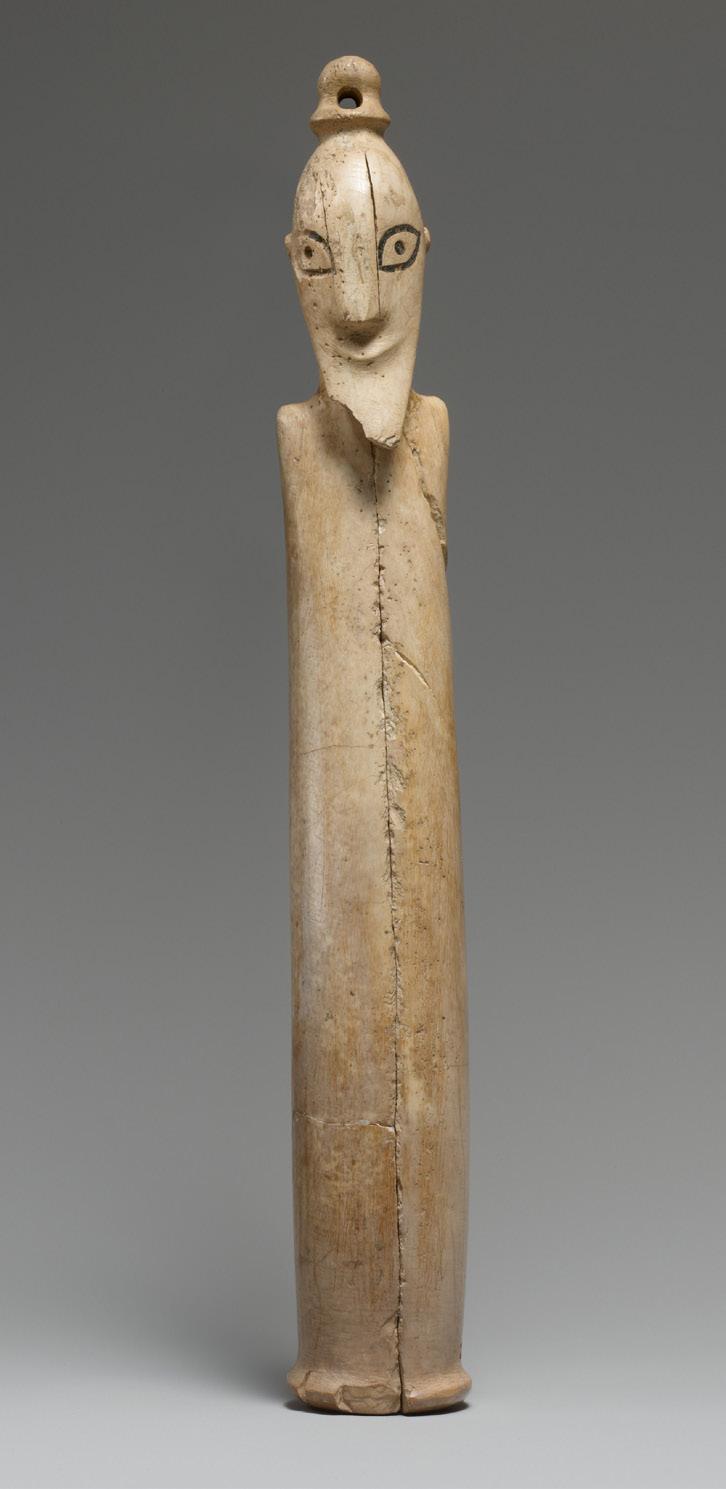
Fig. 2. A tusk figurine of a man, ca. 3900–3500 BCE. Ivory; h. 22.4 x w. 3 x d. 3.2 cm (8 13/16 x 13/16 x 1 1/4 in.)
NYC: The Metropolitan Museum of Art. 23.2.1, Rogers Fund, 1923.
Speaking of ethics, one would be remiss if there were no discussion regarding the display of burial goods in general. In her paper about conservators and human remains, Sanchita Balachandran includes some of her experiences as a conservator working with ancient Egyptian remains. She raises important questions about objects found at burial sites, lamenting the fact that such items may never be reunited with the human with whom they were buried. Museums often remove such objects from their original contexts to bring them into their collections, and curators then attempt to recreate this context to educate the public and retain the original meanings. In this sense, curators and exhibitions have a certain power over
the public: the way in which objects are displayed, and the environments they are displayed in, influence how a viewer perceives them. As previously stated, Figurine of a man was a part of the 2012 exhibition entitled The Dawn of Egyptian Art, for which curator Diana Craig Patch took great care in illuminating the earliest known pieces of ancient Egyptian art. In this case, one can be sure that Figurine of a man received more attention than it typically does in its permanent exhibit in Gallery 101. However, it is a shame to have little to no information regarding figurine’s findspot, uses, or even its owner. The truth of the matter is that most excavated objects remain in museum storage rather than on display. Objects are separated by material, rather than the grave or findspot, for the purely scientific purpose of preserving them, disregarding their original purposes (Balachandran 2009, 208). Compared to other pieces that remain in storage and out of the public eye for what could be the rest of eternity, Figurine of a man has received good care, yet there is still more to be desired.
Figurine of a man is well cared for by the Met in terms of its physical being. Indeed, the ancient ivory has developed a patina, many small scratches, and a large crack, but its carved features remain sharp and easily seen. Holistically, however, the lack of information regarding its past is problematic and troubling. Before its purchase by the Metropolitan Museum of Art, its last known owner is Michel Abemayor, a known antiquities dealer who may have gotten it through legitimate channels, but also may not have—this is information that may never be certain. The number of hands the figurine has passed through, as well as the number of undocumented treatments it has gone through, will never be known. The lack of information regarding this object extends even to its material, listed both as elephant ivory and hippopotamus ivory by the Met. Additionally, Figurine of a man was found in a burial setting, yet it is only displayed with other small ivory figurines, rather than other objects that may have been exhumed from the same space. The figurine will likely remain separated from those other grave goods, as well as the person it was buried with, for the foreseeable future. Perhaps this object is better off than others that remain in storage, yet additional care for the figurine as a concept and its meaning is to be desired.
Works Cited
Abdel Naiem, E. (2016). ‘Elephant in ancient Egypt (A Philological – Religious Study)’, Journal of Association of Arab Universities for Tourism and Hospitality, 13(1), pp. 55-62. doi: 10.21608/ jaauth.2016.49962
Brodie, Neil. “An Archaeologist’s View of the Trade in Unprovenanced Antiquities.” In Art and Cultural Heritage: Law, Policy and Practice, edited by Barbara T. Hoffman, 52–63. Cambridge: Cambridge University Press, 2006.
Egyptian, maker unknown. Figure of a man, ca. 3650-3450 BCE. Ivory; h. 6.5 x w. 2.2 x d. 0.9 cm (2 9/16 x 7/8 x 3/8 in.). NYC: The Metropolitan Museum of Art. 54.28.2, Rogers Fund, 1954. Location unknown. https://www.metmuseum.org/art/ collection/search/547233
Egyptian, maker unknown. A Tusk Figurine of a Man, ca. 3900-3500BCE. Ivory; h. 22.4 x w. 3 x d. 3.2 cm (8 13/16 x 13/16 x 1 1/4 in.). NYC: The Metropolitan Museum of Art. 23.2.31, Rogers Fund, 1923. Location unknown. https://www.metmuseum.org/art/collection/search/547232
Gaensicke, Susanne. “Conservation of Egyptian Objects: A Review of Current Practices in the Field and in Museum Settings.” In A Companion to Ancient Egyptian Art, edited by Melinda K. Hartwig, First Edition., 522–43. John Wiley & Sons, 2015.
Hagen, Fredrik Norland, and Ryholt, Kim. The Antiquities Trade in Egypt 1880-1930: The H.O. Lange Papers. The Royal Danish Academy of Science and Letters. Scientia Danica, Series H, Humanistica 4 vol. 8, 59-74, 2016.
Krzyszkowska, Olga. “Classical Handbook 3: Ivory and Related Materials.” Bulletin Supplement (University of London. Institute of Classical Studies), no. 59 (1990): ii–109. https://www.jstor.org/ stable/43768461.
Patch, Diana Craig, Marianne Eaton-Krauss, and Susan J. Allen. Dawn of Egyptian Art. Metropolitan Museum of Art, 2011.
Pogrebin, Robin, and Bowley, Graham. “After Seizures, the Met Sets a Plan to Scour Collections for Looted Art.” The New York Times, May 9, 2023, sec. Arts. https://www.nytimes.com/2023/05/09/ arts/met-museum-looted-art.html.
Shelley, Marjorie. The Care and Handling of Art Objects: Practices in The Metropolitan Museum of Art (Revised Edition, 2019). Metropolitan Museum of Art, 2019.
Stünkel, Isabel. “Hippopotami in Ancient Egypt.” In Heilbrunn Timeline of Art History. New York: The Metropolitan Museum of Art, 2000–. http:// www.metmuseum.org/toah/hd/hipi/hd_hipi.htm (November 2017)

I attended FIT from 2006–2011, first as a Communication Design major with a plan to pursue Packaging Design. After starting that program and learning more about the career trajectory, I decided to switch to Art History and Museum Professions (which was then Visual Arts Management), having just finished a summer stint as design assistant at the Frances Young Tang Teaching Museum at Skidmore College. Seeing the inside operations of a small museum was inspiring and opened my mind to what a marriage of design, art history, and hands-on art research could look like.
To fill the year after leaving Packaging Design, having just missed out on the deadline for changing majors by three days, I followed a one-year Advertising and Marketing Communications program and finally joined AHMP to finish out my time at FIT. In my final semester, I completed the required internship credit with the Richard Avedon Foundation, learning to archive film negatives and handle small prints to aid with foundation research and publications.
In the fall of 2011, months after my internship concluded, the Avedon Foundation called asking if I would like to join them for an upcoming exhibition as an assistant registrar. Not knowing what registrar work entailed, I jumped into the role and ended up staying with the foundation from 2011–2018, departing as the Exhibitions Coordinator for a new role as a registrar at the Brooklyn Museum, where I currently work.
Katrina Dumas, AHMP ‘11As an Art History and Museum Professions student, I utilized all resources available on campus. I founded the AHMP Association, participated as a museum facilitator at The Museum at FIT (MFIT), founded the first AHMP/MFIT internship, and organized a number of field trips and art conversations. I found my heart beat fast when organizing such events and saw potential in providing outreach in this regard. My effort on campus was recognized by professionals in the NY art scene, and I landed a full-time position in a prestigious art gallery in Chelsea upon graduation. Shortly thereafter, I expanded my scope of understanding at the Brooklyn Museum, where I was hired as a Visitor Experience Associate. None of this would have happened if I hadn’t taken the initiatives on campus and kept searching for my role in the art ecosystem.
Currently, I am pursuing an MA in Art Business at the Sotheby’s Institute of Art. I have so much respect for the professional faculty, and I’m grateful to have wonderful colleagues who are gallery owners, art advisors, and lawyers. They will definitely be great resources in my career, as I aspire to establish a non-profit organization or LLC to continue advocating for the community that I belong to.
It’s crazy and somewhat scary how little decisions magnify and manifest themselves into lifelong commitments. At least that was the outcome for me; from wanting to be an artist to wanting to work for artists, I navigated my way by absorbing classroom materials and finding my niche.

Here’s what I want to tell current AHMP students: be open to learning beyond classrooms; remind yourself of your privilege of having access to education and utilize it, and continue searching for your vocation and your fit in the art world. It doesn’t have to happen overnight or even while you are at school. Opportunities will reveal themselves to you when you have an optimistic attitude. Most importantly, enjoy your time at FIT! I guarantee you will be reminiscing for years, just like me. :)
John Paul Jang, AHMP ‘22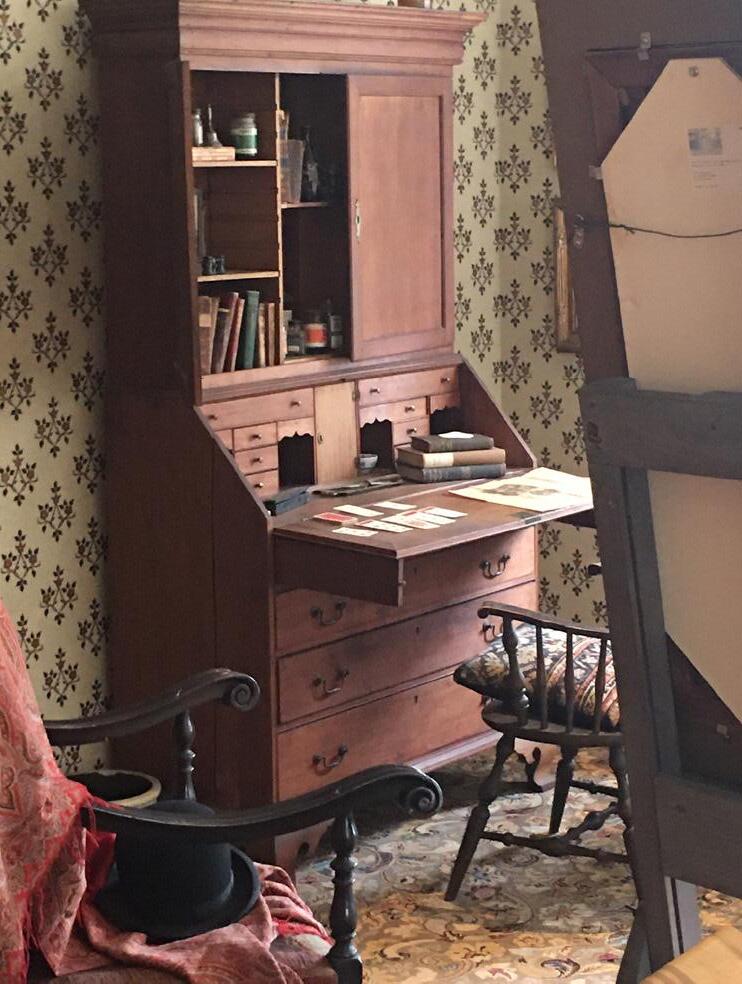

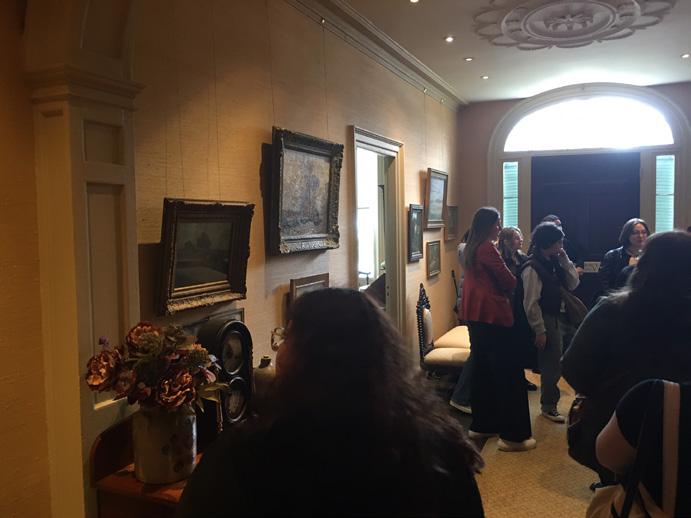


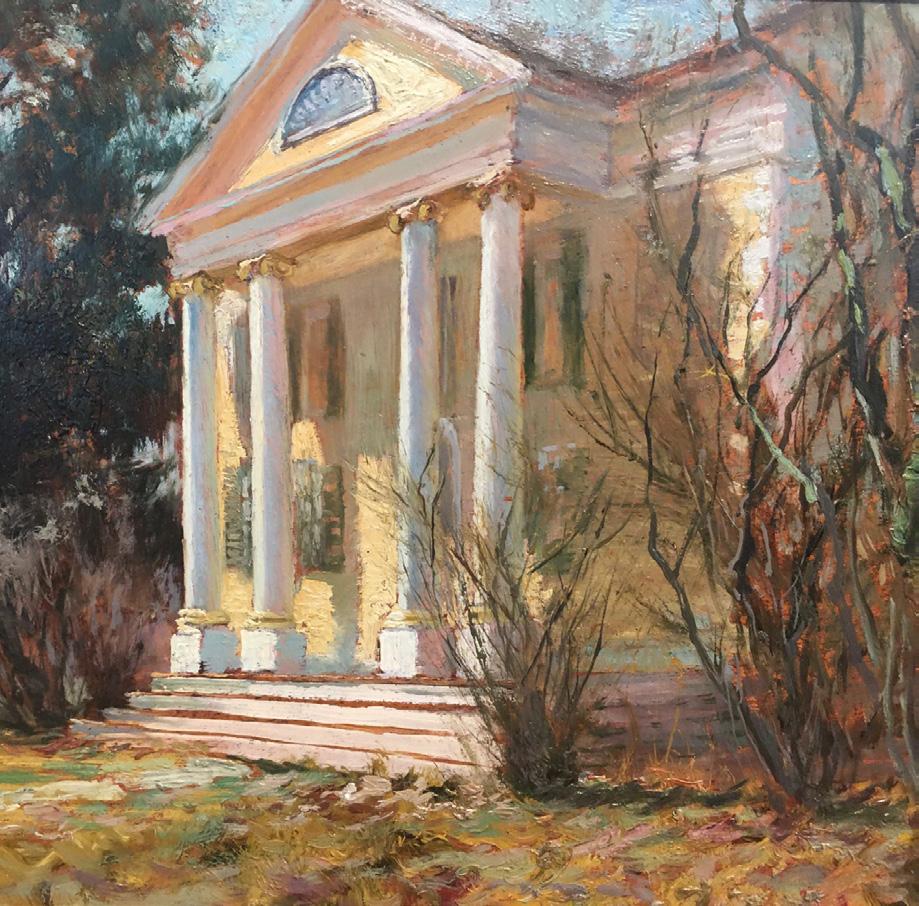
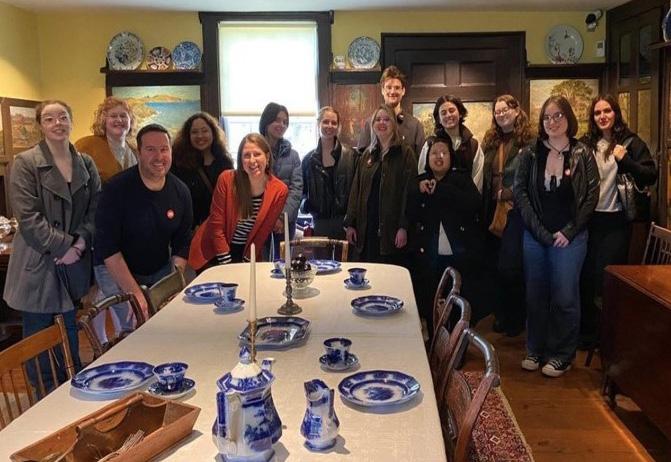

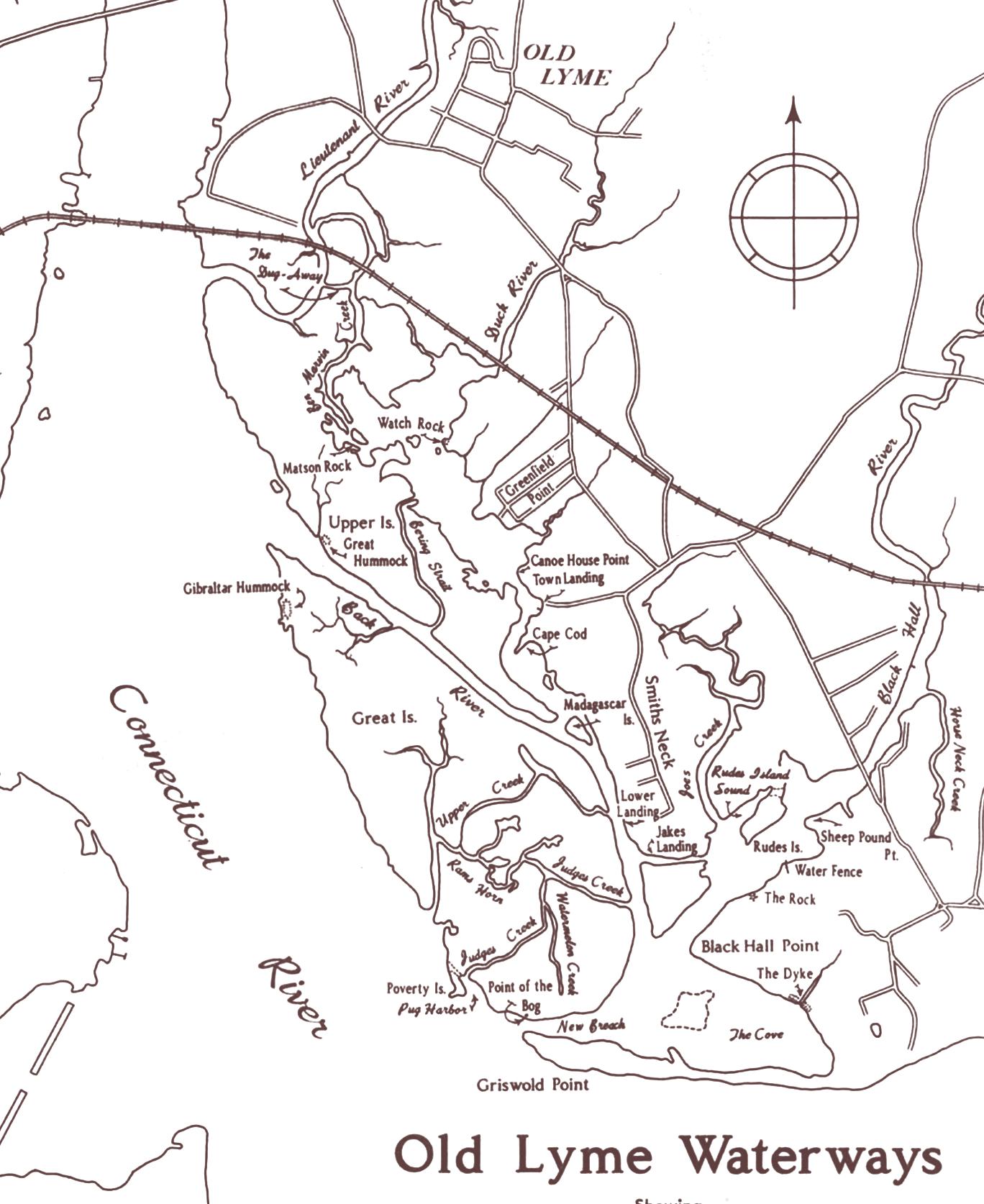
As seniors of the Art History and Museum Professions (AHMP) program, we had the privilege of curating the exhibition CrossPollination: ¡Moda Hoy! at The Museum at FIT (MFIT). This exhibition highlighted the incredible talent of students both here at FIT and at LASALLE College of the Arts in Singapore. Cross-Pollination was on view in April 2024 in The Gallery at The Museum at FIT, and it took much time to prepare.

When we learned that we would be working with fellow FIT students here in New York as well as students in Singapore, we were both excited and worried as we were unsure as to how this exhibition would come to be. Our main goal was to ensure that we did not take away from the artists' voices. From the beginning of the process we made sure we were always in communication with the artists: interviewing them, including them in the marketing photoshoots, etc. As curators looking to shift the focus off of the museum and back onto the designers and their cultures, it was important to us to get to know the artists and hear the stories they were telling. Throughout the curation process, we learned so much about the making of an exhibition and what it takes for a show to reach the general public. We considered each aspect of the show carefully, from mannequins to posters to the layout of sketches and mood boards.
Showcasing garments from both FIT students and students from LASALLE, through the fusion and merging of cultures, the exhibition was separated into three main themes: “Myth and Rituals,” “Beliefs and Economics of Care,” and “Activism and Resistance.” These topics derived from and responded to key themes in the exhibition ¡Moda Hoy! Latin American and Latinx Fashion Design Today, which was on display at The Museum at FIT in the summer and early fall of 2023.
The displays explored topics of art, sustainability, politics, craftsmanship, pop culture, heritage, and more. “Myths and Rituals”
focused on exploring myths, traditions, and practices. Students also expressed themes of folklore, oral stories, and more of their own cultures for their work through a contemporary lens. “Beliefs and Economics of Care” referred to the ancient practices and cosmologies that guide a sustainable belief system for those of a culture. This theme led students to explore natural techniques, sustainability, and practices that connect to the earth.

“Activism and Resistance” took a more direct influence from ¡Moda Hoy! Latin American and Latinx Fashion Design Today, as many designers used their works to critique the social, political, and environmental issues surrounding their communities. Likewise, student artists created works that comment on and call for change in their communities. These themes, together with a deeper exploration of decentering traditional museum exhibitions, allowed the students at LASALLE College of the Arts in Singapore and at the Fashion Institute of Technology in New York to portray their cultures through their perspectives and voices in the creative process of making.
In creating this show, we as curators had the privilege of learning from and experiencing the wonderful interpretations of students’ cultures through a contemporary lens. We hope the exhibition inspired a deeper appreciation for cultures other than our own and that it fostered a place of togetherness in the joy of learning from one another.
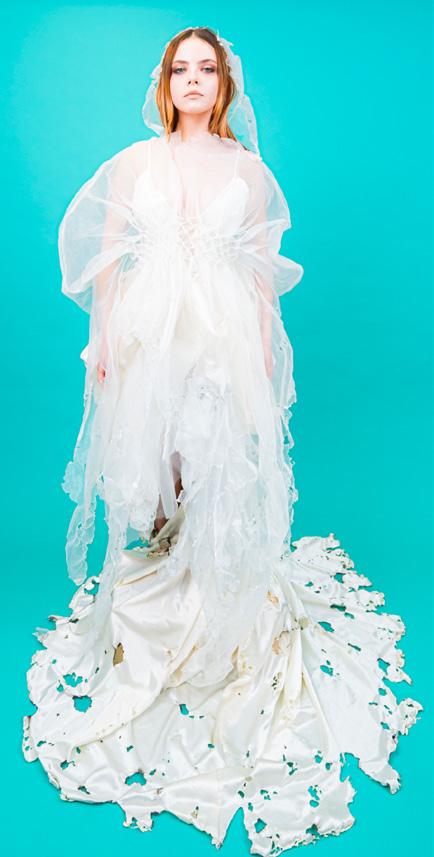



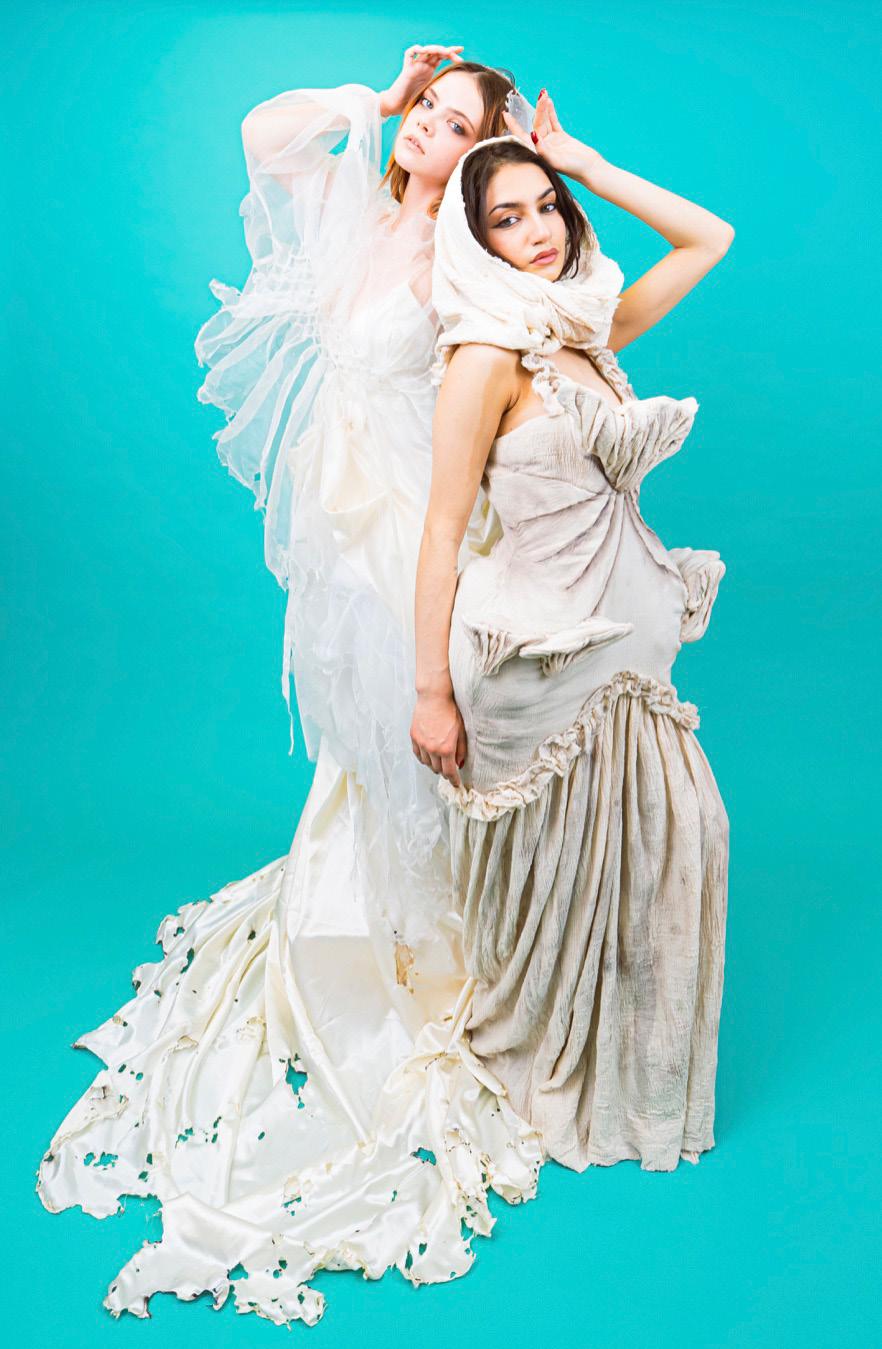
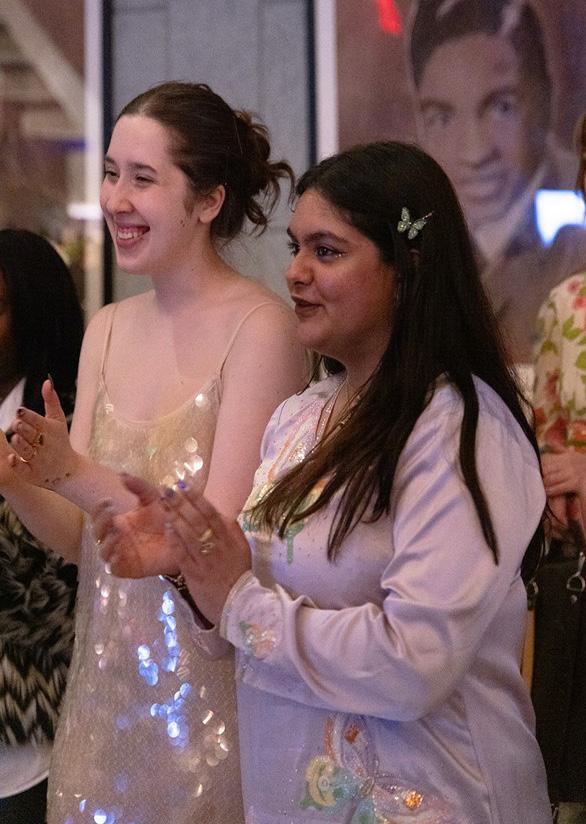
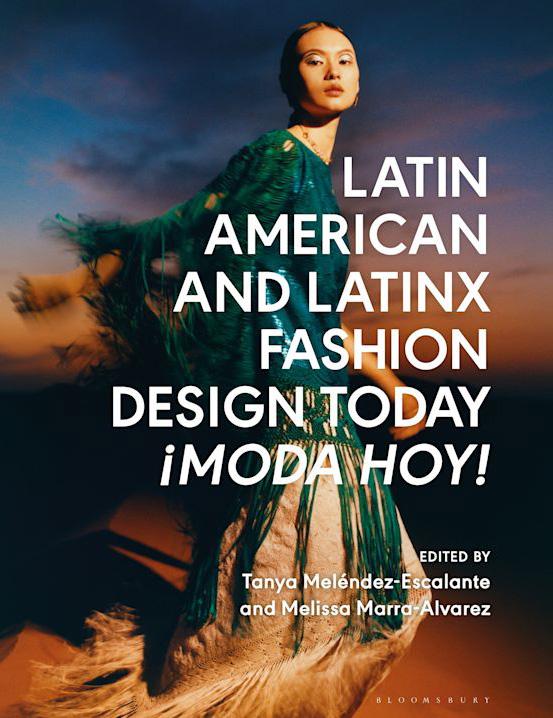

Chair of the Art History and Museum Professions program ALEXANDER NAGEL was invited to give the Sam Nakis Annual Memorial Lecture at the University of Missouri–St. Louis in September 2023. He also presented at nine conferences this past academic year, both virtual and in person, local and international. For his presentation “Leaving Aden and Sanaa Behind: Documenting Movements and Transportation of Qatabanian Collections and Archives in Germany and North America,” he was awarded a SUNY FIT Faculty Development Grant for Conference Participation to travel to Jordan. He was also awarded a Paul Mellon Visiting Senior Fellowship for The Center for Advanced Study in the Visual Arts at the National Gallery, Washington D.C. In August 2023, his book Color and Meaning in the Art of Achaemenid Persia was published by Cambridge University Press; additionally, he contributed two book chapters to other publications and wrote several journal articles.
AMY WERBEL served as FIT’s President of the Faculty Senate, as Chair of the School of Liberal Arts and Sciences General Education Committee, and as SUNY Civic Engagement and Civil Discourse Fellow. Along with Social Sciences professor Daniel Levinson-Wilk and Modern Languages and Cultures professor Rebecca Bauman, she also served as Project Co-Investigator for Creative Spaces/ Contested Spaces: Reinterpreting Italian American Public Art in New York City, a Landmarks of American History and Culture Grant provided by the National Endowment for the Humanities. Her speaking engagements included events at the National Academy of Design, Harvard University, and Sorbonne Université.
At the New York University Institute for Fine Arts, ANDREW WEINSTEIN gave a lecture

entitled “Baneful Medicine and a Radical Bioethics in Contemporary Art.” His other presentations included conferences in Vienna, Austria; London, England; Porto, Portugal; and Dallas, Texas. Here at FIT, he and Natalie Nudell hosted the event “Women, Textiles, and the Holocaust” together with the Holocaust Commemoration Committee and the FIT Diversity Collective.
BRONTË HEBDON PATTERSON was awarded a Khalil R. Rizk Fellowship from Venetian Heritage, Inc., as well as a Graduate School of Arts and Sciences Dissertation Writing Fellowship from New York University. She also presented at two conferences in Italy. Her recent publications include “Embroidered Hierarchies: French Civil Uniforms and the décret du 29 messidor in Napoleonic Paris and Milan” in Costume: The Journal of the Costume Society, and “Civil Uniforms in Ridley Scott’s Napoleon Biopic” for the Edinburgh University Press Blog
DAVID DROGIN presented “A Semiotics of Perspective and Vision in Donatello’s Relief Sculpture,” for the Vision and Depiction conference at the University of Technology in Delft, Netherlands. He also chaired the session “Cities, Geopolitics, and Materials” for the Sixteenth Century Society Conference in Baltimore, Maryland.
Winner of the SUNY Chancellor’s Award for Excellence in Adjunct Teaching, JENNIFER MIYUKI BABCOCK gave six invited talks and presented at two conferences in the past academic year. Additionally, she published four papers, including a chapter in the forthcoming book Rethinking Ancient Egypt, for which she is also a co-editor.
Department Chair JUSTINE DE YOUNG authored The Art of Parisian Chic: Modern
Women and Modern Artists in Impressionist Paris, which will be released in 2025 by Bloomsbury. She spoke at the Cleveland Museum of Art's "Picturing Women at Work in the Nineteenth Century" symposium and was an invited panelist for “Opening Art and Design Education for a Just and Sustainable World: A Panel Discussion on Open Educational Resources and Practices” at the Pratt Institute.
In December 2023, KRISTEN LACISTE was awarded a SUNY FIT Faculty Development Grant for Conference Presentation. Her conference activity included chairing the panel “30 Years of Afrofuturism (and Still Going)” at the College Art Association annual conference and presenting “Innovation or Appropriation?: The Pros and Cons of La SAPE Inspired Garments of LEZELE and Pagne Lifestyle” at the annual conference of the African Studies Association. Additionally, she was a panelist at two events here at FIT. Her recent publications include “Practical Work: Sapeuses (Women Sapeurs) in Kinshasa, Democratic Republic of the Congo” for African Arts and “Olubugo (Barkcloth)” for Smarthistory.

KYUNGHEE PYUN co-edited the book Teaching Labor History in Art and Design: Capitalism and the Creative Industries (Routledge) as well as Home and Homeland in Asian Diaspora: Transnational Reflections in Art, Literature, and Film (Palgrave Macmillan), both published in 2024. She is the author of the forthcoming book Korean Fashion Encountering Modernity: Intersectionality of Art and Technology 1850–1960 (Bloomsbury), for which she was awarded an Overseas Publication Support Grant from the Korea Arts Management Service. She also wrote two book chapters and a journal article over the past year. She was project advisor
and curator for Conscience: Commemorating Labor History in the Fashion Industry, an exhibition of student artworks at FIT’s Gladys Marcus Library. Her public lectures included engagements at New York University, the Korea Society, the Seoul Museum of History, National Gallery Singapore, and more. She chaired and organized sessions for the annual conferences of the Association for Asian Studies (where she also delivered a paper) and the American Historical Association. Additionally, she was a presenter at a number of other conferences and symposia, both in the US and abroad.
MARIANNE EGGLER is the 2023 winner of the George T. Dorsch Endowed Fellowship, an annual award given by the History of Art department at FIT.
Visual Resources Curator MOLLY SCHOEN was promoted to Deputy Editor of Art Documentation, the journal of the Art Libraries Association of North America. Additionally, she joined the board of the Visual Resources Association as Junior Director for Events & Initiatives.

NANCY MACDONELL ROBERTSON ’s book, Empresses of Seventh Avenue: World War II, New York City, and the Birth of American Fashion, will be released this fall by St. Martin’s press. She also continued to write columns for the fashion section of the Wall Street Journal, and she gave a lecture entitled “The Women Behind Harper’s Bazaar” at the Barnes Foundation in Philadelphia.
In November 2023, NATALIE NUDELL launched the Fashion Calendar Research Database (FCRD) (see p.10). This interactive website is the result of the grant project The Ruth Finley Collection: Digitizing 70 Years of the Fashion Calendar, which was supported by a Digitizing Hidden Collections grant from the Council on Library and Information Resources and made possible by funding from the Mellon Foundation. Her book, In

American Fashion: Ruth Finley’s Fashion Calendar, will be released in July 2024 by Bloomsbury. She also contributed a chapter to the forthcoming book, Teaching Labor History in Art and Design: Capitalism and Creative Industries, co-edited by Kyunghee Pyun. Along with the Special Collections and College Archives of FIT’s Gladys Marcus Library, she organized the Archiving Fashion: Mapping Fashion and Textile Collections conference, which was funded by The Kress Foundation and The Harnisch Foundation. She presented the FCRD at several other conferences and workshops, and she received two faculty development grants from FIT’s Center for Excellence in Teaching. In the spring semester, she and Andrew Weinstein cohosted the panel discussion and exhibition Textiles, Women, and the Holocaust with the Holocaust Commemoration Committee and the FIT Diversity Collective; she also moderated a similar event last fall at the Montreal Holocaust Museum in Canada.

PAUL MELTON wrote “The Cunning of Pattern Recognition,” an essay for the exhibition Pattern, The Grid, and Other Systems, which was curated by Julia Jacquette and held in FIT’s Art and Design Gallery. He also gave two invited talks at the University of Richmond and served as a peer reviewer for the Open Library of Humanities Journal
RAISSA BRETAÑA co-authored the book Moxie: The Daring Women of Classic Hollywood, to be released in October 2024 by Abbeville Press. She also wrote a review of Kate Strasdin’s The Dress Diary for The New

York Times Book Review, and she wrote a commissioned article, “How Little Richard Found His Flamboyant Style” for PBS American Masters.
Taking to the seas, RICHARD TURNBULL delivered an eleven-part series on Southeast Asian art and culture for the Viking cruise line, as well as a six-part lecture series on Melanesian art and culture for Silversea Cruises. He also exhibited his original prints at the Zea Mays Printmaking Fair in Florence, Massachusetts and at the Borgia Gallery of Elms College, Springfield, Massachusetts.
With support from the George T. Dorsch Endowed Fellowship, SANDRA SKURVIDA wrote the book John Cage Composing, Computing, and Curating, to be released later in 2024 as part of the Routledge Research in Art History series. As part of the book launch for Your Time is My Time (Mousse, 2023), she gave a talk entitled “I as a Readymade” in New York and in Vilnius, Lithuania. She also co-curated the event Woman, Life, Freedom: Year Zero at the e-flux screening room in New York.

STEVEN ZUCKER published the open-access multimedia textbook Reframing Art History. He also facilitated partnerships with institutions, including the J. Paul Getty Museum; the Rubin Museum of Art; the National Portrait Gallery, Smithsonian Institution; the National Museum of Korea; and the Museum of Art & Photography in Bengaluru, India to add essays and video content to Smarthistory, an open educational resource he cofounded in 2005.

The Visual Resources unit serves the image, technology, and research needs of the History of Art Department. They find, describe, and digitize images, text, and video needed by faculty for teaching and research. These images are hosted on FITDIL, FIT’s Digital Image Library, and represent all major time periods, cultures, media, and geographic regions in the art history canon.
To commemorate the 60th anniversary of the March on Washington for Jobs and Freedom, where Martin Luther King, Jr. famously delivered his “I Have a Dream” speech, Visual Resources staff Nanja Andriananjason and Molly Schoen curated an exhibit for the Gladys Marcus Library, on view from August 2023 – May 2024. This exhibit includes photographs, ephemera, and library books on the historic march, and it was part of The 1863 · 1963 · 2023 Project: Civil Rights in FIT’s Neighborhood. Initiated by Social Sciences Professor Daniel Levinson-Wilk, the project consisted of a series of events in the fall 2023 semester to raise awareness of the historical significance of FIT’s neighborhood. Bayard Rustin (1912–1987), the principal organizer of the March on Washington, planned much of the march from his Penn South apartment, just steps away from FIT’s campus.
The International Ladies Garment Workers Union, led by president David Dubinsky (1892–1982) also helped to pay for the sound system through which Dr. King spoke of his dream. Today, Penn South faces FIT’s Dubinsky Student Center building.
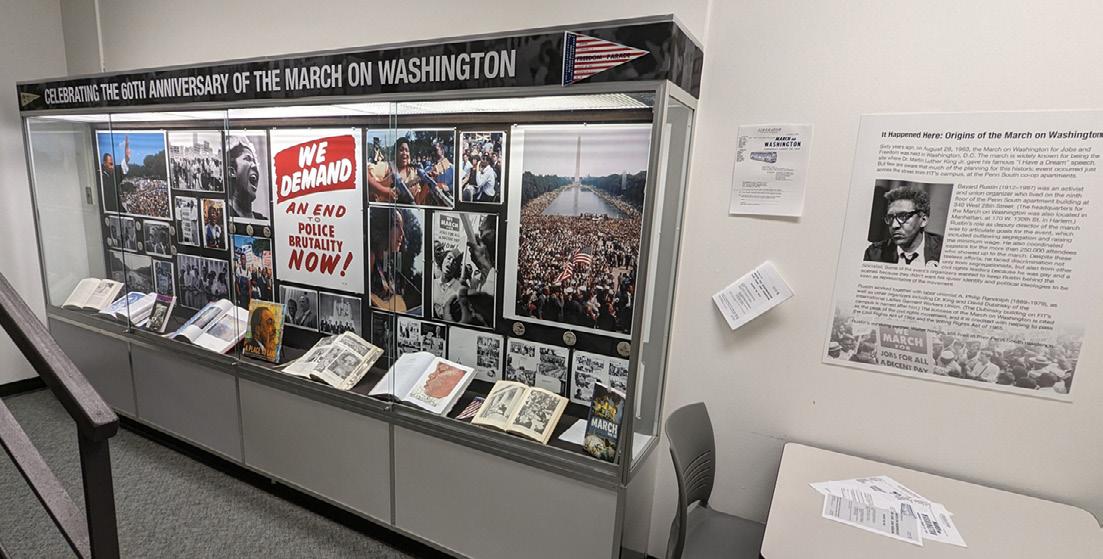
All of the URLs mentioned in this issue can be found on the Art History Insider Linktree. Scan the QR code with your phone or visit linktr.ee/arthistoryinsider


Editorial Committee: Associate Professor Kyunghee Pyun, Assistant Professor Andrea Vázquez De Arthur, Assistant Professor Kristen Laciste
Editor: Molly Schoen
Graphic Design: Nanja Andriananjason


History of Art Department
SUNY Fashion Institute of Technology
227 W. 27th St.
Business and Liberal Arts Center, Room B634
New York, NY 10001
(212) 217-4640
Visit the History of Art website
Chair: Associate Professor Justine De Young
Chair, Art History and Museum Professions: Assistant Professor Alexander Nagel
Department Coordinators: Jen Fantozzi, Jasmin Miranda
Visual Resources Curator: Molly Schoen
Technologist: Nanja Andriananjason l ahmp_fit

Art History Insider The Annual Newsletter of FIT’s History of Art Department
Whether you’re an alum with an exciting professional development to share, or a prospective student seeking more information about our Art History and Museum Professions major, we want to hear from you!
Write to molly_schoen@fitnyc.edu
The views, opinions, and conclusions expressed in this newsletter are those of the author or organization and not necessarily those of the Fashion Institute of Technology or its officers and trustees. The author or organization is solely responsible for its content. Images are not for reproduction without permission of each copyright holder. Please feel free to share this newsletter with your friends and colleagues. Thank you for your support.
